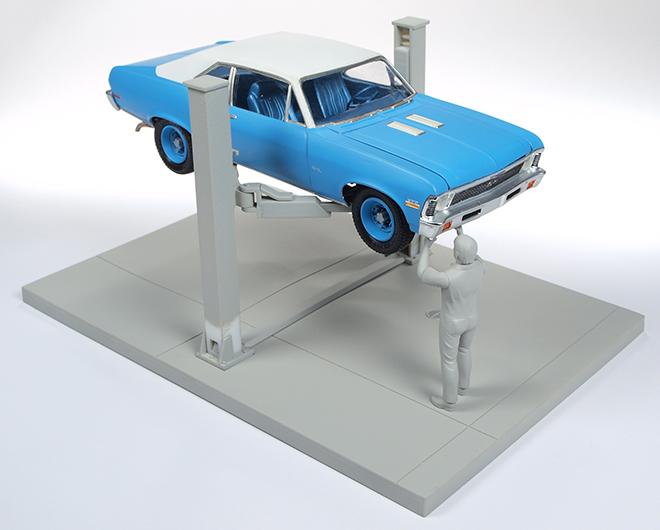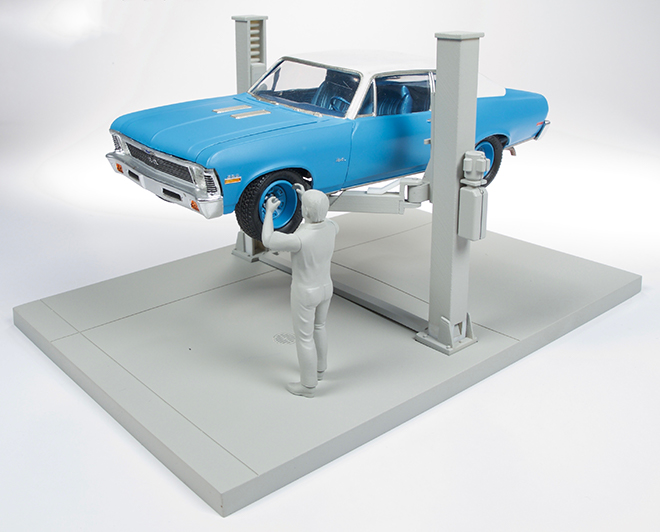

Archive for the ‘Round2 Models’ Category
Space: 1999 Models: New 1/72 scale Eagle kit Pt. 7
This post finishes up the preview look at our new 1/72 Eagle kit. As things stand now, we have gone through three rounds of test shot refinement, the box art is done and production will begin soon. The kits are on track to be in the market in November.
Paint: The Final Frontier
Oops! Wrong show. Carry on.
By E. James Small
First, I apologize to readers for finishing this up so late. Life and other jobs took priority so I just couldn’t put it to mind until those chores were done. Anyway, we continue with where we left off.
After all sub assemblies are done it is time to paint the model.
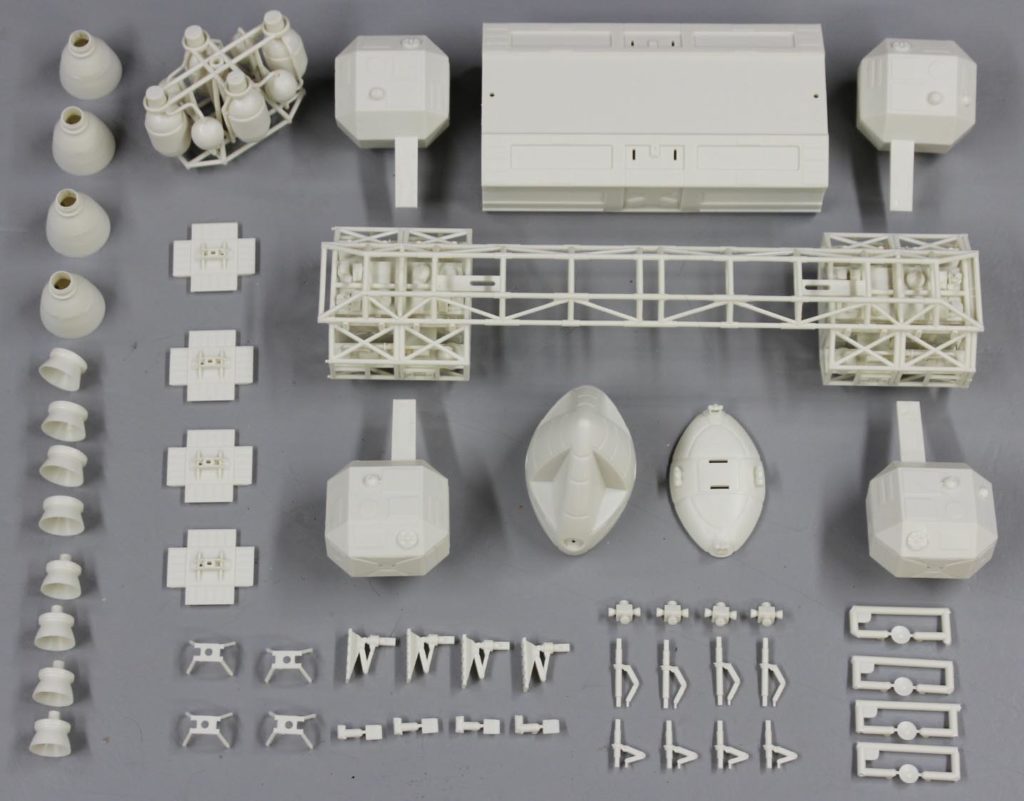
I first used gray primer to paint all parts, straight from the
rattle-can. Then when the gray primer was dry I primed it again with
white. Why two primer coats? First, the gray primer is much more opaque
than white primer is. And primer is much less physically thick than the colour
coat. By priming it first with gray to knock back the translucency of the
plastic and then putting white (which covers better than colour coat) over
that, it makes it possible to use a lot less of the main white colour coat.
The off-white colour coat was then sprayed over the white primer. I like to use
automotive lacquer when I can because it dries very fast, is very tough, and
goes on less thick and less likely to run than enamels or most acrylics or
alkyds. When lacquer dries, most of the carrier evaporates and the paint
pigment hugs the details very well.
Details were either left in primer gray or sprayed black and silver as shown.
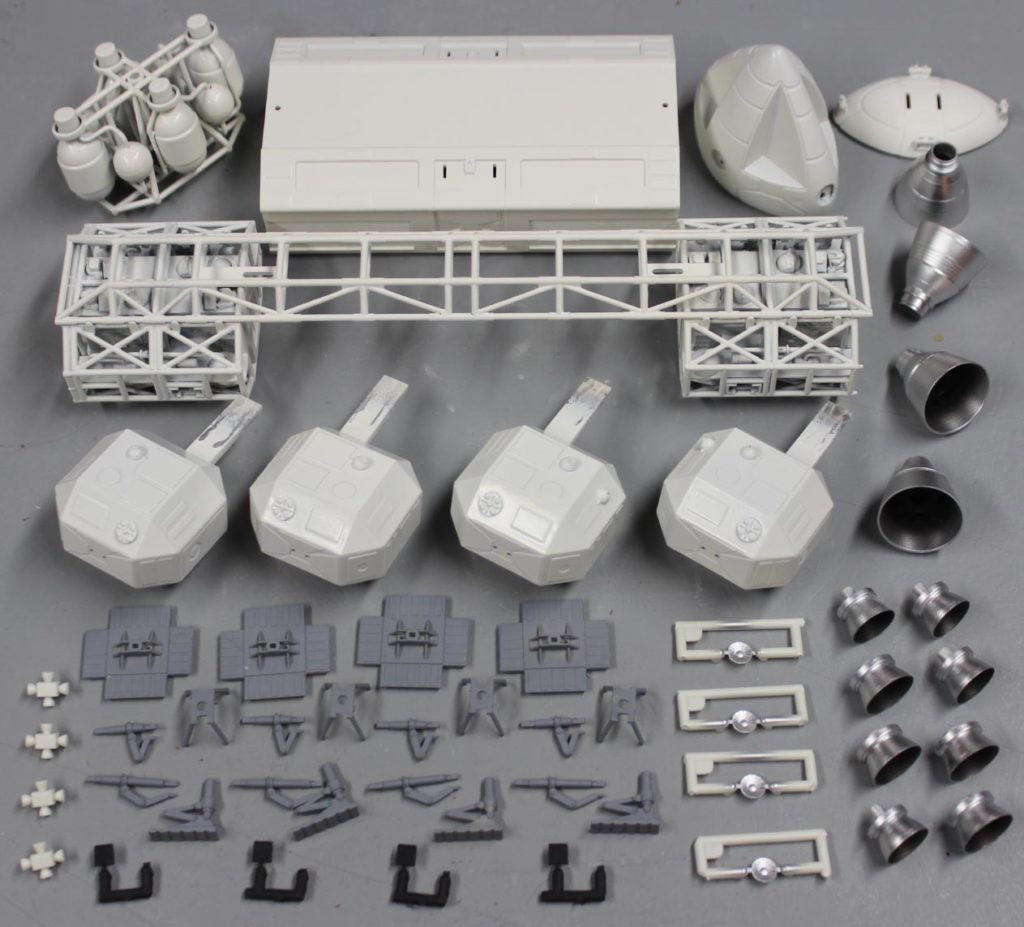
Weathering was done by first cutting chunks from an old business card and using it as a soft mask to airbrush light gray paneling effects over the entire model. This method is very fast, easy and looks authentic because they often used this technique on the original studio miniatures as well.
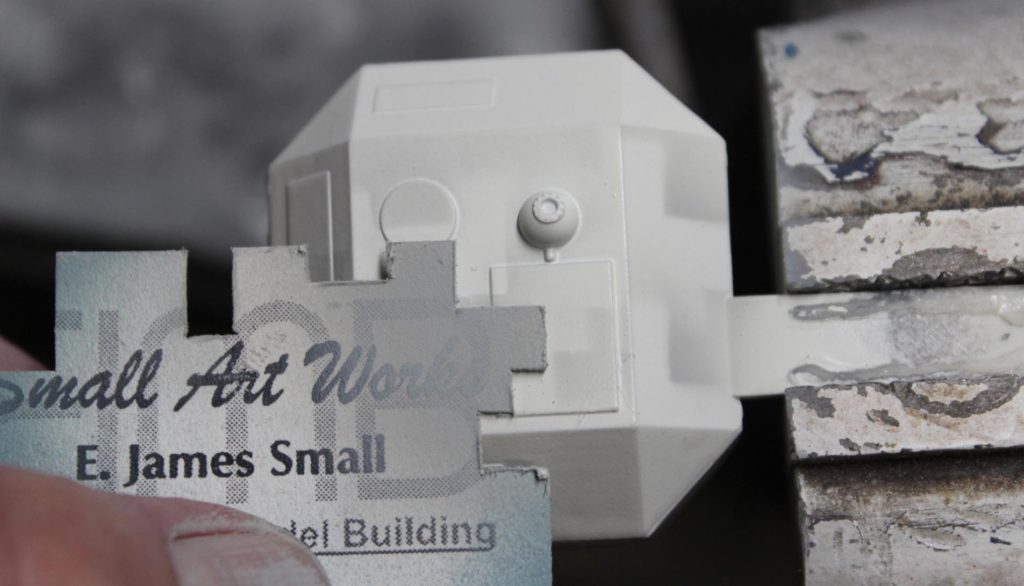
Further weathering was done by dusting some black powder paint over the model then wiping or blowing off the excess. Black powder paint is gray unless you add water to it. This allows the details to pop a little more.
Now it’s time to paint the details and add decals.
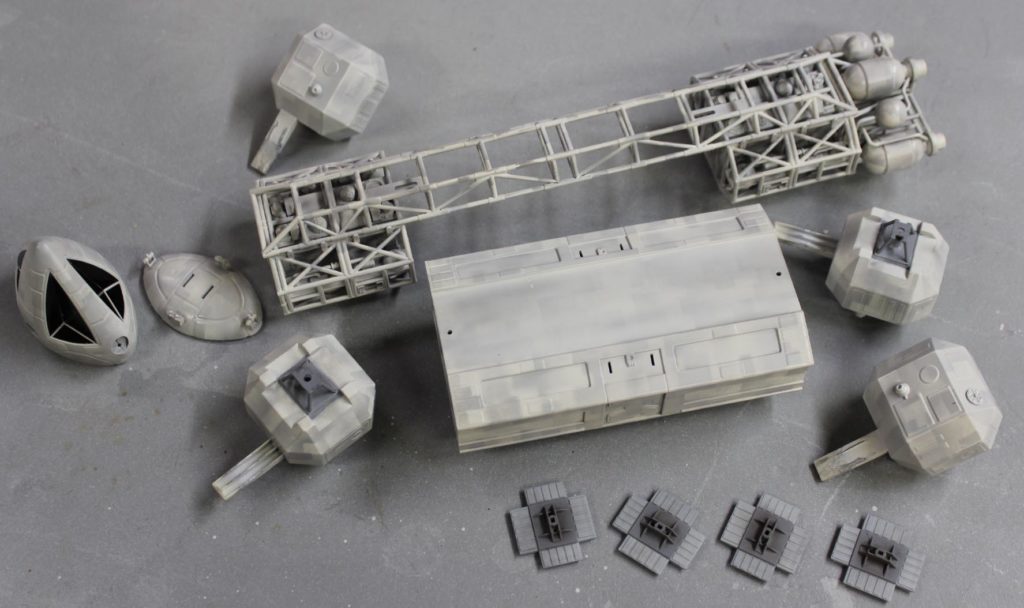
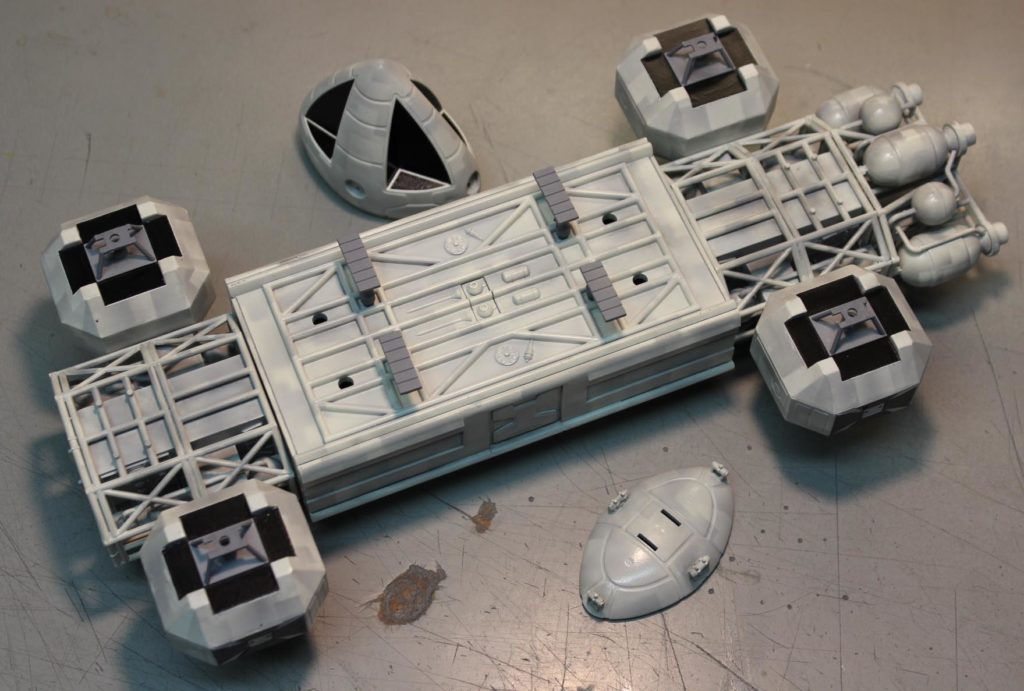
The landing gear oleos’ silver struts were just hand painted.
Those of you who need more attention to detail and more time to spare would do
well to cover those struts with Bare Metal Foil for an even better appearance.
The landing feet “toes” were dusted with a lighter gray. Since the actual kit
decals had not been done yet, I printed a set myself by using scaled down ones
from the previously released 22” Eagle also available from MPC/Round 2. I find
that using “Future” floor coating applied to the model just before the decal is
applied gets rid of a lot of silvering and saves having to spray the entire
model with a gloss coat, as decals never work well over matte surfaces. The
Future blends the decals into the surface. Just apply the Future to the surface
a few seconds before you apply the decals.
Finally the entire model, minus the silver bits, was sprayed with dull coat.
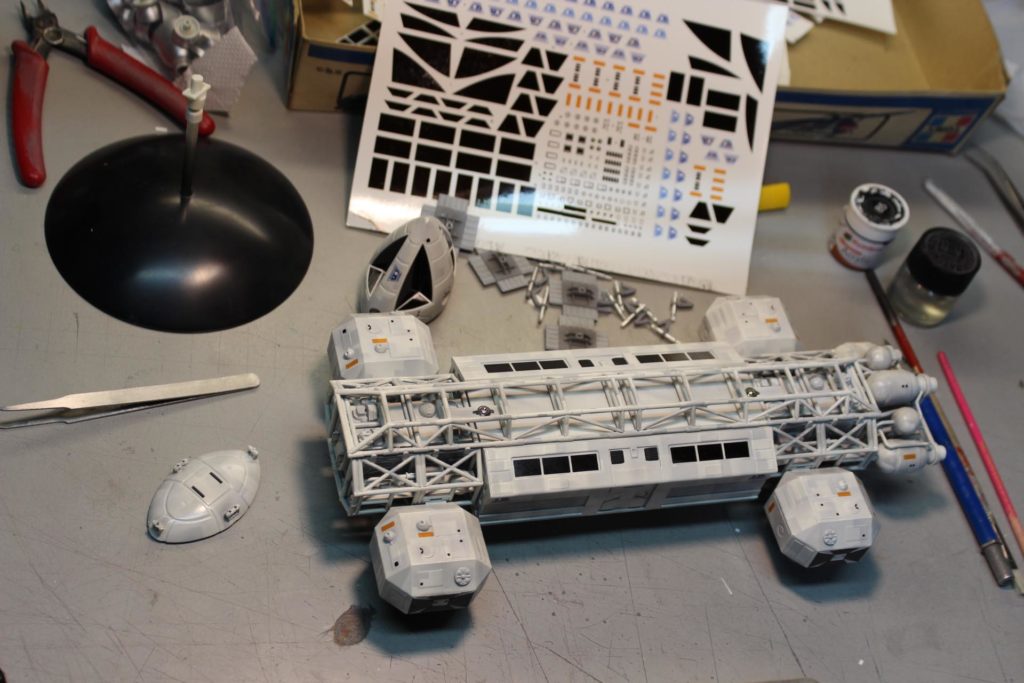
Here are all the painting products I used to finish the model.
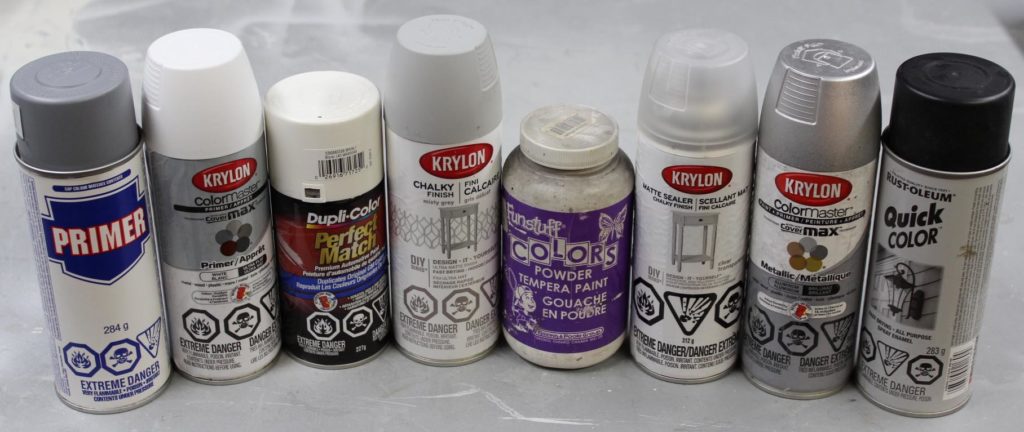
Left to right: Generic Canadian Tire gray primer, Krylon white primer, Dupli-Color off-white automotive lacquer, Krylon Chalky Finish Misty Grey (for the airbrushed weathering), black powder paint for weathering, Krylon Chalky Finish Matte Sealer for the overall finishing dull coat, Krylon silver for the engines and finally Rust-Oleum Quick Color flat black for airbrushing inside the engine bells.
Why use spray cans instead of hobby paints, you ask? Because of the expense, mainly, and convenience. There are no hobby shops near me and spray cans like these are readily available at local hardware stores. Also you get a lot more paint for the money with spray cans and at the rate I go through paint it would cost me a fortune in hobby paints for my work. I do have a stash of hobby paints that I have collected over the last few decades (usually Tamiya, with some Testors and others) used mostly for small detail brush work.
Then came the photography of the model for the box art once the painting was all done. Jamie Hood did a GORGEOUS painting (Wait ‘til you see it!) for the main box art but we needed pictures of the model for the rest of the box and tray. Most of it was all just standard stuff shot against a black velvet backdrop but I wanted a “hero” type shot showing an environment for the main box tray picture. Jamie picked out a shot from the show itself that had the angle he wanted, so I just more-or-less copied that shot using the 14” model in place of the original 44” VFX miniature. I painted up a quick and dirty partial launch pad to scale from an old board I had laying around for the model to sit on so that shadows cast onto it would look natural. That was better than just Photoshopping the model onto a digital background. Besides, even though this was to be a manipulated shot and a composite, I wanted to use real physical elements wherever possible. Real objects always look better than computer generated ones. Knowing the angles necessary I didn’t need very much of the pad to show, that’s why it’s mostly unfinished and all chopped up. Took just a few minutes with a couple of spray cans to make.
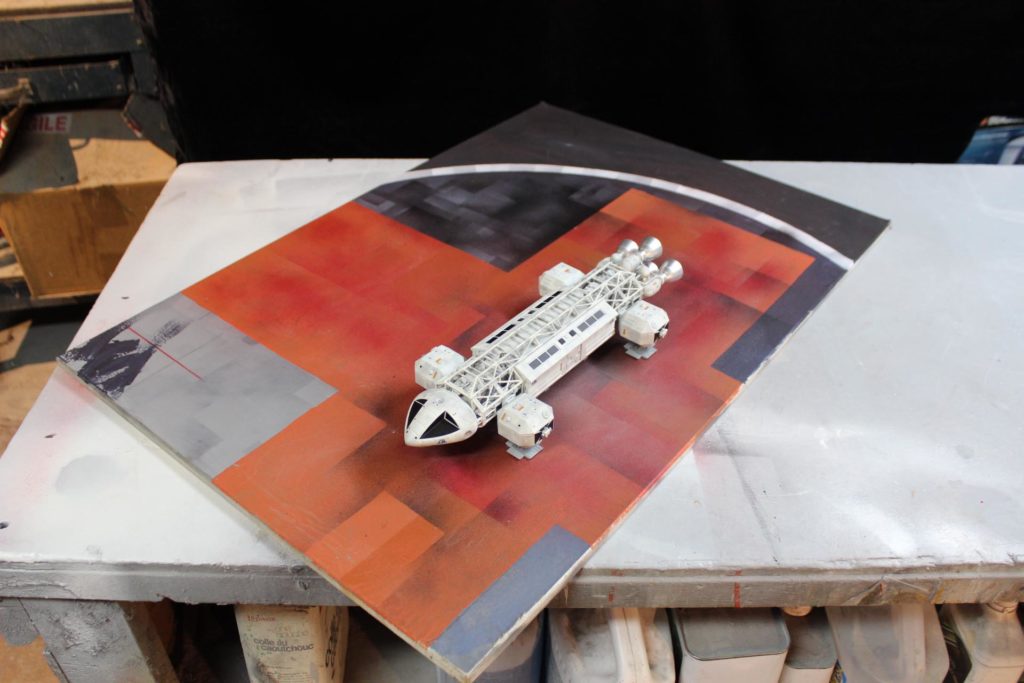
Then when strategically lit to look somewhat dramatic it was photographed then brought into Photoshop where I matted in a background of the Lunar surface using elements I had made from the 22” Eagle Cargo Pod kit box art. The mountains are just bits of foam chunks and tin foil sprayed with gray primer, covered in cement dust for texture and shot up close with appropriate lighting. The mountains are only about 3-5 inches wide or so.
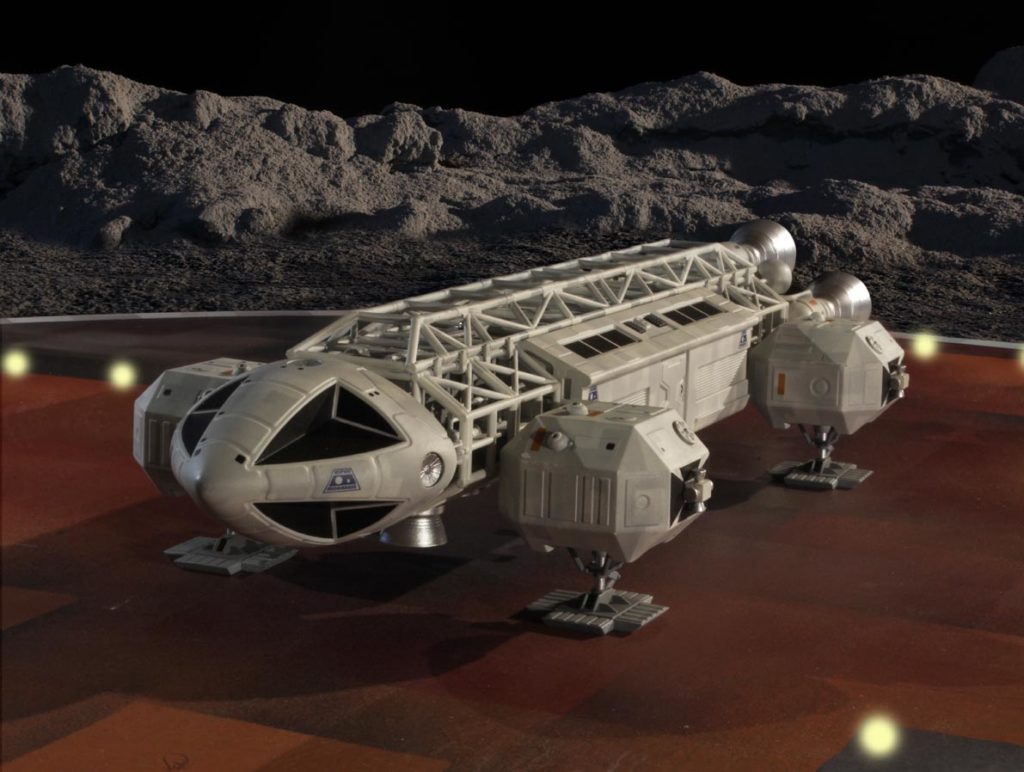
Looks pretty good and reasonably well matches what was seen on screen. Only thing I’m not happy with are the launch pad lights. I didn’t have the time needed to wire in real lights on the pad set so I just digitally plopped those in quick. I’m not the artist in Photoshop that Jamie is though. Maybe he can make them look a lot better by the time he lays out the box art. He can probably improve the entire scene as I did that composite rather quickly, I had other work to get to.
I hope you people out there will enjoy this new kit. It is amazingly well done for its size and has all the external details of the larger 22” model but takes up less space for those of you who don’t have much room to spare. Another fantastic achievement by Jamie and his gang over at Round 2!
We can’t wait to see what you all do with yours!
Jim.
Coming off the Shelf – It’s Gonna Be A Big Rig Summer!
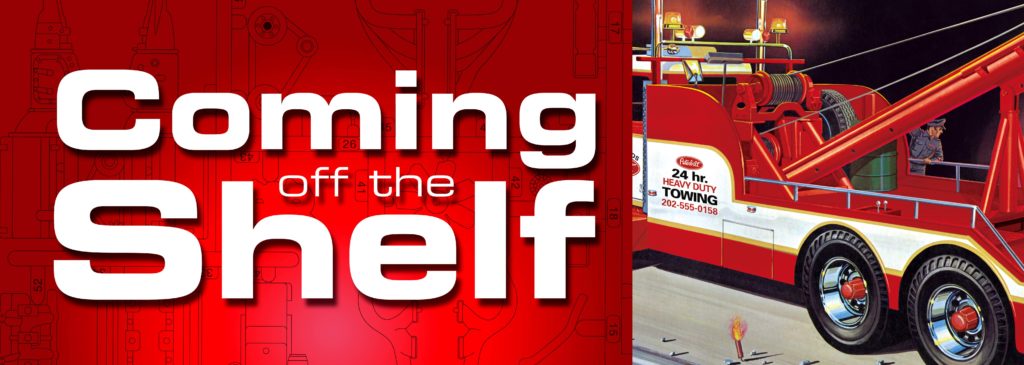
Summer is here, and with it comes a BIG announcement. Two AMT big rig kits. That’s right, TWO big rig kits, are scheduled for release within a month! The Peterbilt Wrecker and Autocar DC-9964B Dump Truck!
First we have the Peterbilt Wrecker. Shot in white, the wrecker kit offers a custom body, 2 piece telescopic boom, bumper guard, hydraulic jack, tool chest, shovel, broom and more! Also included are colorful new decals and a reworked, vintage style package. Newly tooled tires were also thrown in—pad printed with Firestone lettering…thanks to the kats at AMT. When built, the Peterbilt wrecker measures out at almost 12 inches on the dot.
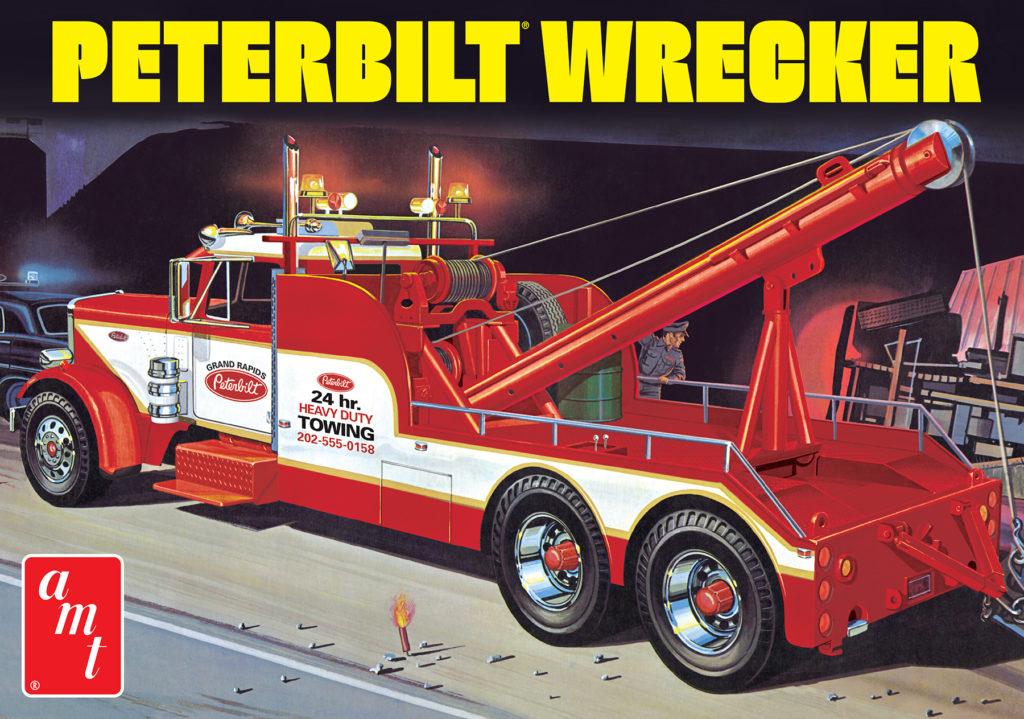
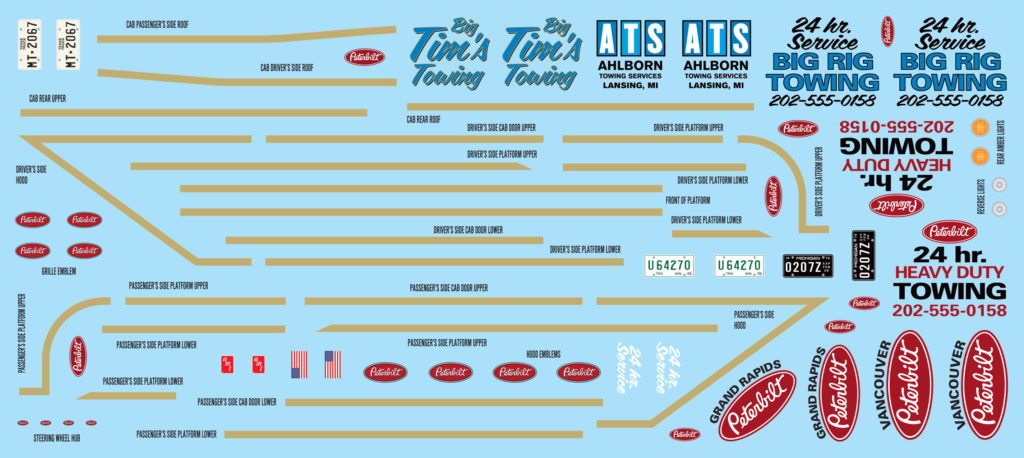
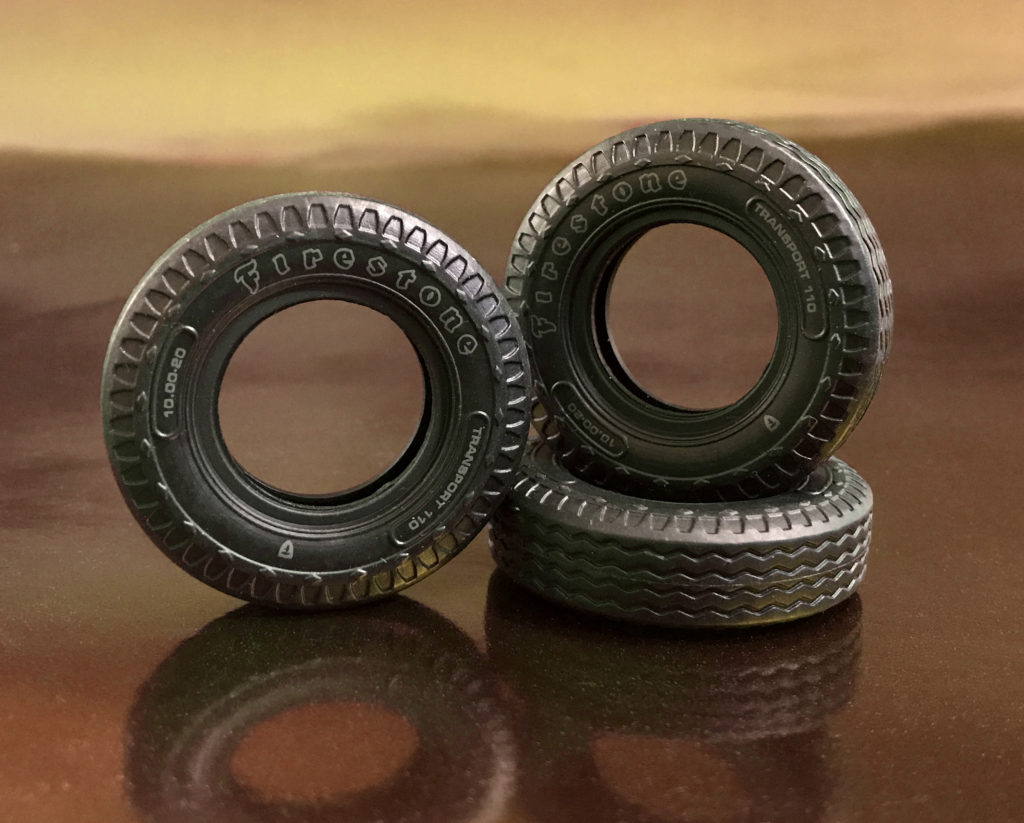
The second big rig inline to release soon is the Autocar DC-9964B Dump Truck. A close cousin to the Autocar A64B Semi Tractor, the dump truck is loaded with over 330 parts, including telescopic hoist, air cleaner, hydraulic pump assembly, an optional grille guard, “Gunite” spoke wheels, a Cummins 250 H.P. six-cylinder diesel engine, and more! To add to it, AMT has included an expanded decal sheet with colorful options and vintage style packaging. The dump truck also measures out at approximately 12 inches on the dot when built.
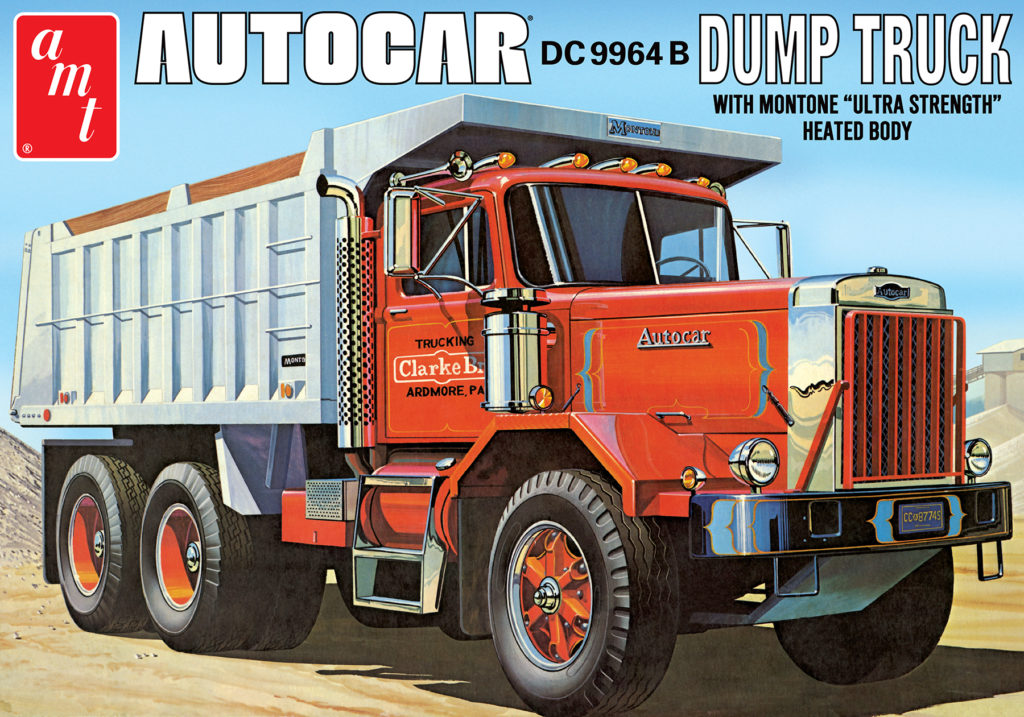
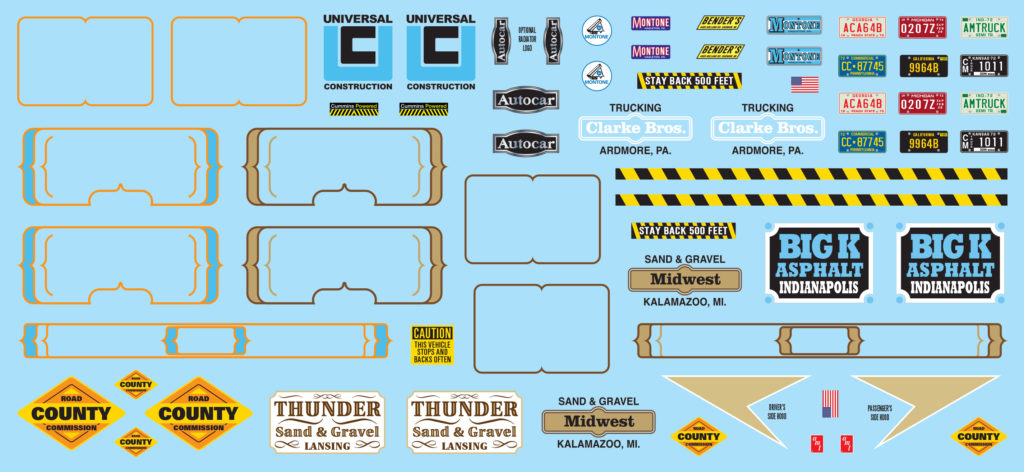
So keep a lookout for these two, hard-to-miss, big boys. Coming soon to a hobby dealer near you, or, online at: autoworldstore.com.
Space: 1999 Models: New 1/72 scale Eagle kit Pt. 5
Welcome back! Your eyes do not deceive you! This continues our guest series reviewing the new 1/72 Eagle test shots. Enjoy!
Engines of Construction.
By E. James Small
For many people, doing this engine assembly might be the trickiest part with all the piping and so forth, but if you follow this procedure, you will find it actually pretty easy. First grab the octagonal engine mounting main frame and the four supports with flats as shown. Glue them in place, making sure the flats (tinted red in this photo) point toward the centerline of where the top and bottom engines will be mounted. See arrows.
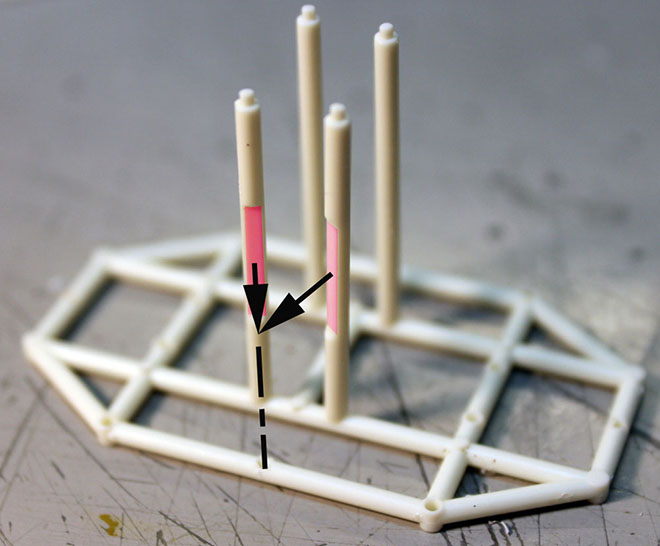
Next glue the cruciform section in place.
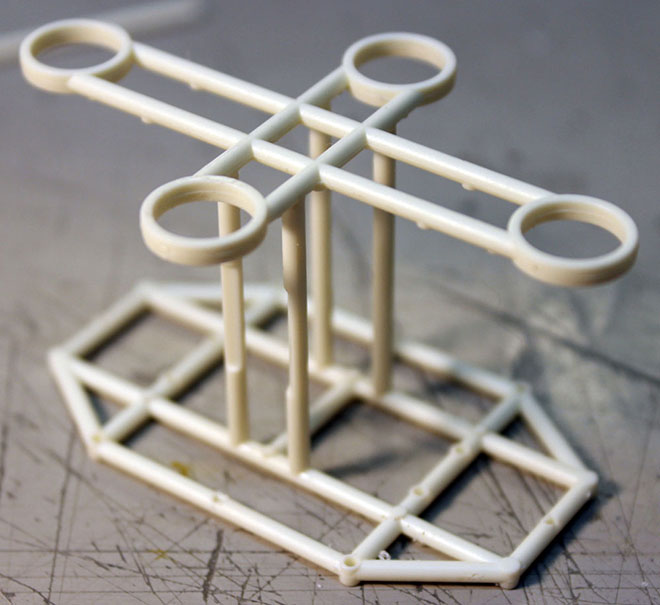
Then with the glue still soft, cement in the four angled braces as shown. Do two opposing corners first, then the other two. It’ll do a lot of wobbling around on you as you do this, but you will find that once all of the braces are in place everything will self-align. Put the unit down on the table as shown and press down gently on the center of the cruciform to weld everything together for a strong bond. Make sure the cruciform is not twisted in relation to the main frame when you sight straight down on it.
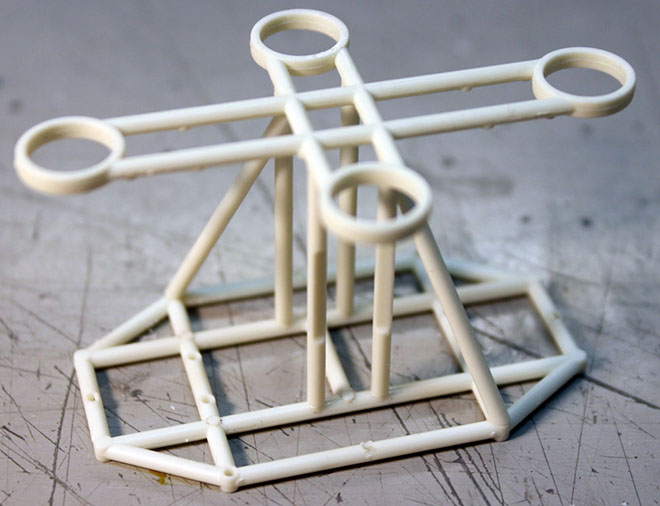
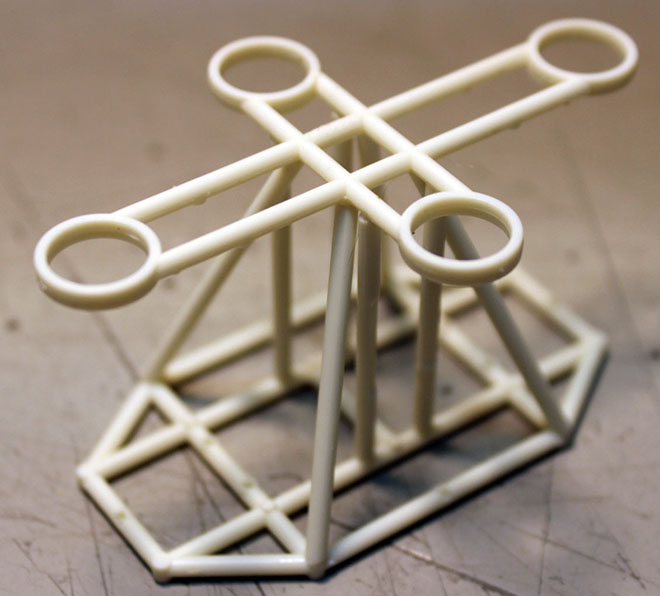
Next assemble the sphere halves onto the sphere frames and then glue those assemblies in place between the main frame and the cruciform as shown. It’s easier to put the end onto the main frame first, then swing it up into place in the cruciform. You can flex the parts just enough to allow the pins to clear.
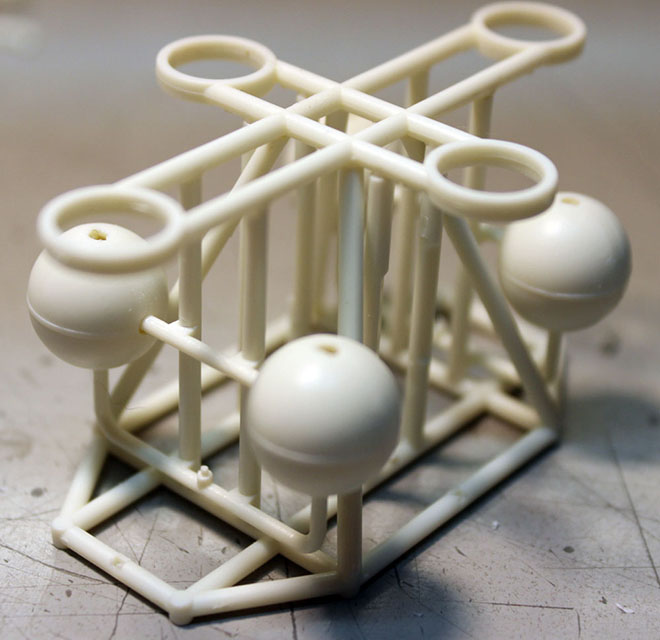
Now, grab the longest of the squiggly pipe parts and glue them to the main frame as shown exactly in the picture. It’s the same on both sides. Tweezers will help a lot here. Pay close attention to the orientation of the parts, exactly as shown. Just glue the center down on the pin in the middle and make sure you sight it all up and keep the tubes level and parallel as shown. Allow to dry.
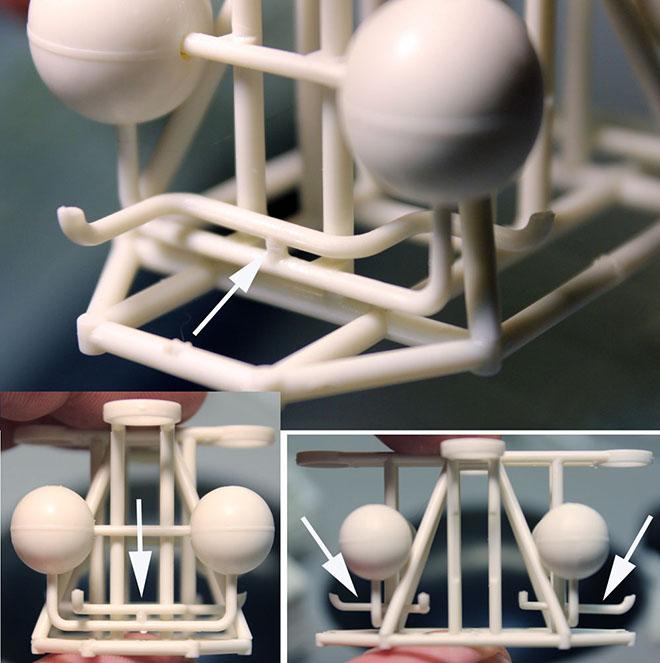
Now you can put the main engine bottles into place. Push the back ends through the cruciform hoops first, then swing the front pins down and cement them to the main frame. Line up the piping so they fit with the previously placed squiggly pipe sections and glue the joints together.
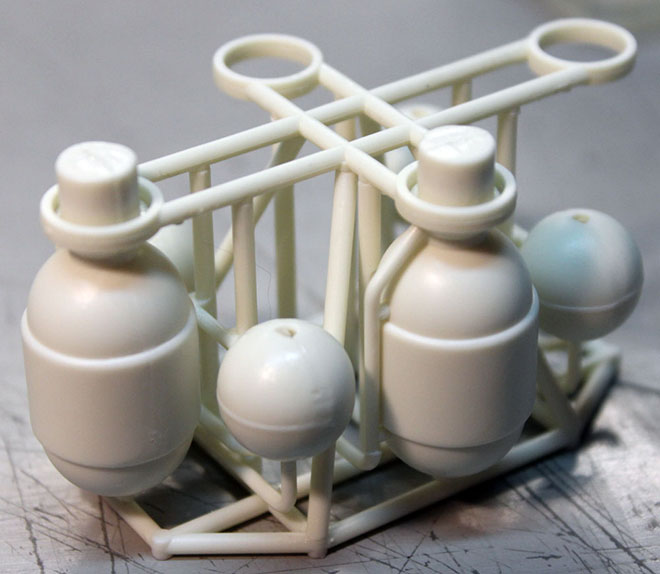
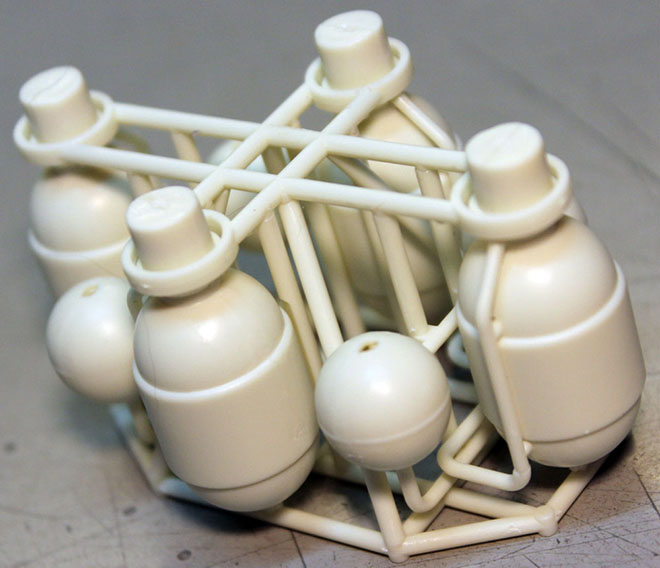
Glue on the remaining piping that goes from the spheres to the back of the engine bottles.
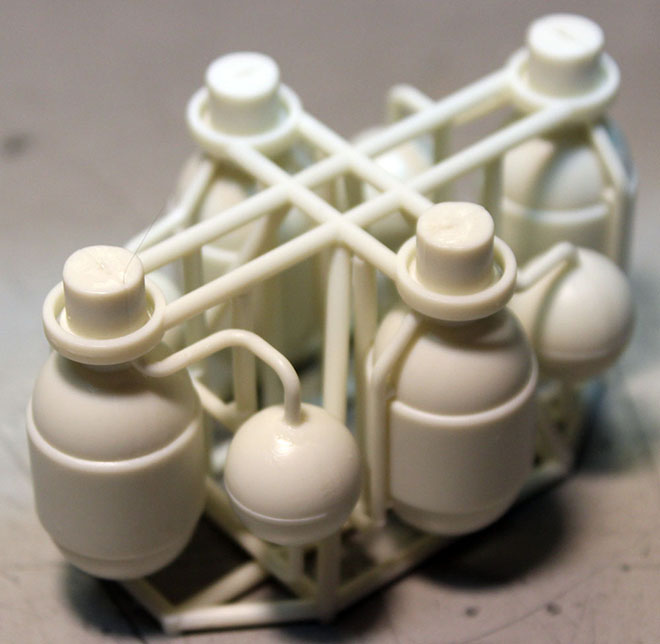
Now you can also put in the center pipe that goes from the center of the cruciform to the main frame. Make sure it is centered and seated as shown. You can offer the assembly up to the rear of the cage assembly to make sure it all lines up before the glue dries.
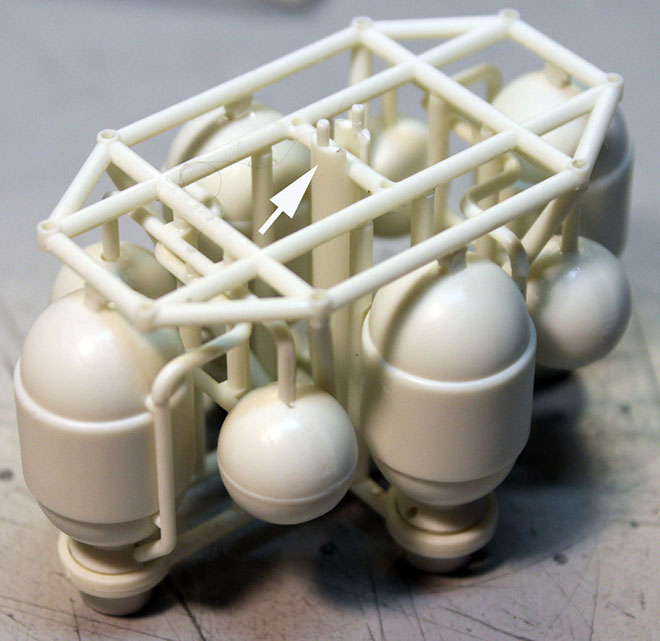
And you’re done that section! That wasn’t so hard, was it? You can either glue it to the back of the cage assembly now, or you can leave it of and paint it all as a unit. Enjoy! More to follow…
Space: 1999 Models: New 1/72 scale Eagle kit Pt. 2
Continuing our guest series reviewing the new 1/72 Eagle test shots.
Also, we have posted photos on our facebook page of every entry that was eligible for our award at Wonderfest USA last weekend. We also posted a short video of the four adult finalists.
Enjoy!
Developing a Spine in Today’s World.
By E. James Small
One of the things I personally worried and spent a lot of time thinking about when contemplating the shortcuts needed to take the fantastic MPC 22” Eagle and shrink it down to 1/72 scale was how the new model’s SPINE was going to be molded. We didn’t want it to look like previous versions made at similar scales that had flat backsides of the tubing and still be strong enough to support the finished model. Also it had to be ACCURATE in proportion as well as easy to build. Parts count and tooling real estate had to be kept to a minimum to keep costs as low as possible. Tooling draft, which means that the two halves of a solid steel mold must be able to be pulled apart without trapping plastic parts in undercuts that would otherwise provide full detail, has always been a problem for all injection kits. That standard had to be improved upon so that the new model would still represent the original HERO miniatures and not look like a cheap toy. Previous offerings of die cast and injection molded models and toys all had those problems. Therefore, how to do it better?
This is one of those times when I wish I could satisfy my personal ego and take credit for such a simple yet ingenious solution as shown in this picture.
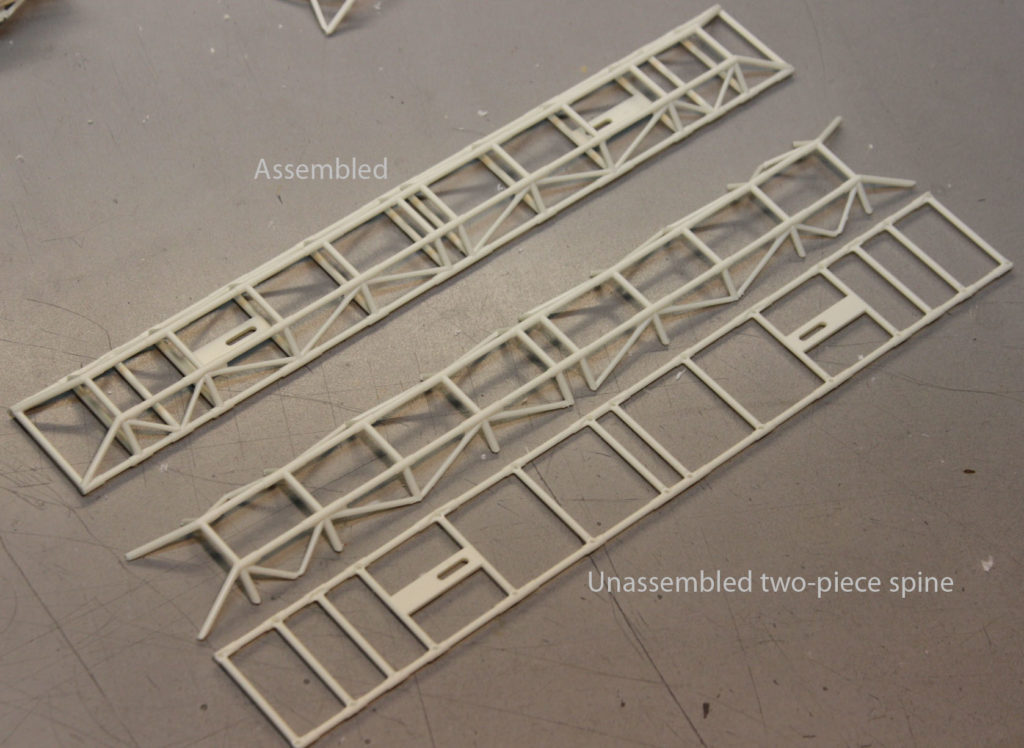
Nope, can’t do it. I had nothing to do with it. The design credit goes entirely to Round 2’s graphic artist and product developer Jamie Hood! In fact it’s one of those Homer Simpson “DOH!” moments when Jamie showed me his idea and I thought to myself “DUH! Why the bloody hell was that never done before? It’s such an OBVIOUS solution to the problem! Why couldn’t I think of that? Why did nobody else think of that decades before?
And, no doubt, all of you reading this, now having seen it will also say the same thing and think; “Why would you do otherwise?”
OK, ask that question of everyone else who made an injection molded Eagle model. Let them wallow in the failure that has been overcome in this new kit! Get it? Yeah, easy to understand once you see it done, not so easy to come up with that simple solution if you’ve not already seen it! Jamie is fairly reticent to take credit for a lot of stuff he does, including the many illustrations he does on kits you do and don’t even know about, so I’m gonna do it for him. Everyone please give him a virtual round of applause for his work! He does a lot that nobody hears or reads about!
“OK”, you ask, “Why wasn’t that done on the 22” model”…? Well, even with Jamie’s ingenious design that even the factory didn’t figure out, there are some flaws on this smaller model that was overcome with more parts on the larger and more expensive version. You must understand the limitations of injection molding, especially the aforementioned draft. The worst of them is slight “webbing” around the tops of the triangular bracing at the top longerons of the spine. Yes, those are necessary molding shortcuts that are needed to keep parts count and tooling down for a smaller scale and lower cost kit. As a builder you can either ignore them or take the time with a #11 Xacto blade and carefully carve them out. The point is, the model will still look “right” whether you choose to do that cleaning up or not, as shown in the photo you see here. No significant cleanup was done in the examples shown.
Ladder and frame. That’s all there is to it. Now you see what it takes to develop a good solid spine in today’s plastic world!
Space: 1999 Models: New 1/72 scale Eagle kit Pt. 1
We hope sci-fi modelers had a good time this past weekend at Wonderfest USA 2019 or at least heard from friends that were there and saw their pictures, etc. We had a blast ourselves. We will post a report later this week, but first we are going to start a series of guest blogs by Jim Small focusing on our brand-new Space: 1999 1/72 scale Eagle Transporter. It grabbed a lot of attention from everyone who stopped by our booth. We sent a set of test shots to Jim just before leaving for the show and we didn’t want to hold anything back. So here we go…
Eagle Hatchling!
By E. James Small
As you all know by now, Round 2 has recently announced their new release of a proper 1/72nd scale Eagle kit. At about 14” long when finished, this kit is perfect for people who don’t have the room to display the larger 22” model, and is made in the popular model aircraft scale. Here is an up-close and personal look at the test shot sprues of the new kit.
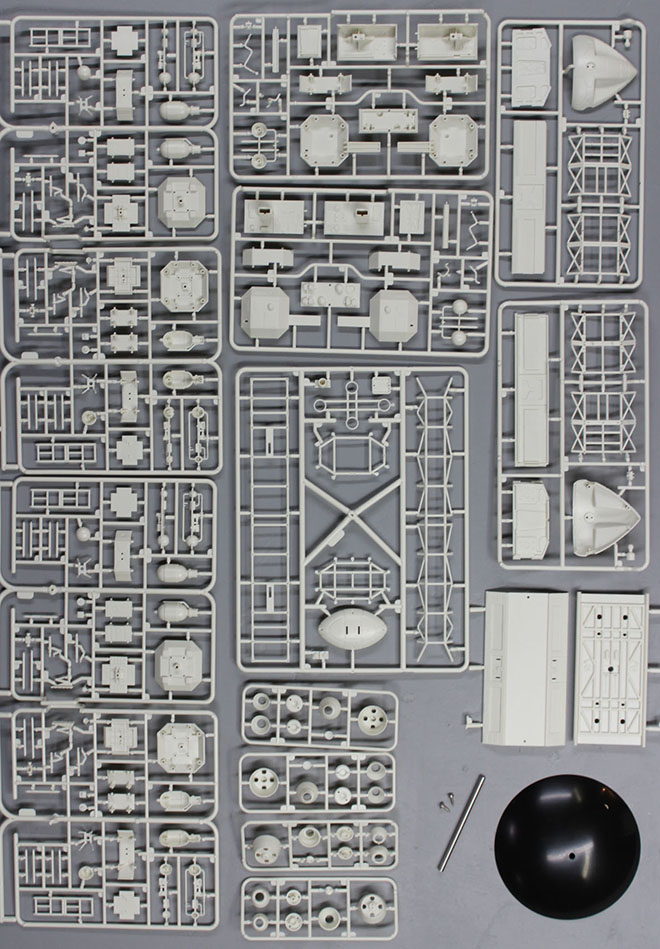
The first pic shows the entire contents of the kit minus the decal sheet and instructions which are yet to be developed. The rest of the pictures show both sides of each type of sprue contained in the kit. Obviously most are repeated. This kit has all the details present in the 22” kit with the added bonus of being able to be mounted on a stand via a replaceable plug on the bottom of the passenger pod. Those who wish to forego the stand can cover the mount with a hatch detailed to match the hardware that is normally in that area. Also like the 22” big brother, the passenger pod is affixed to the spine with screws so it remains removable. Gosh… I wonder if maybe other pod versions will be made available? [Don’t get me in trouble here, Jim. -Jamie] Windows for the passenger pod and nosecone will be represented by decals. Fun fact: on the original 44” studio Eagle models, the Passenger Pod windows were actually not clear but painted over black, so decaled windows in this case are perfectly authentic. Because of its size, articulated landing gear oleos struts were not possible, but you have the option of two positions of struts: landed/collapsed or extended/flying positions.
Enjoy this first detailed look at all the great parts contained in this fantastic new kit!
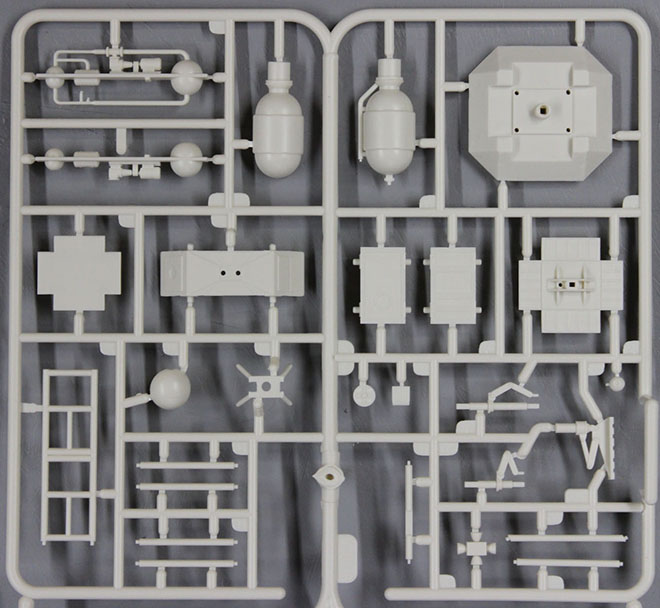
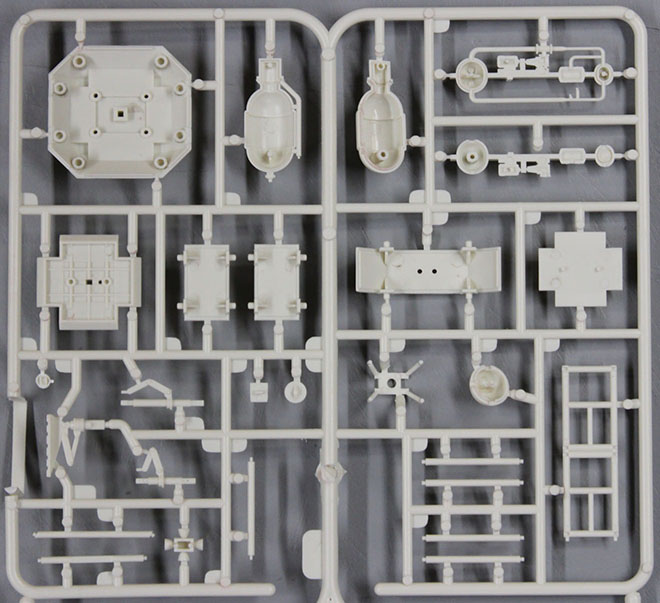
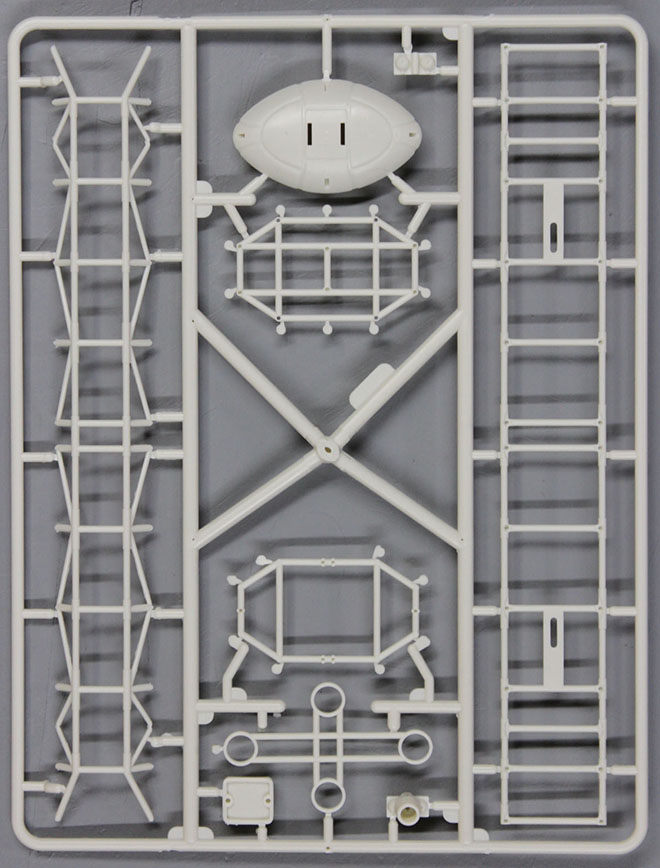
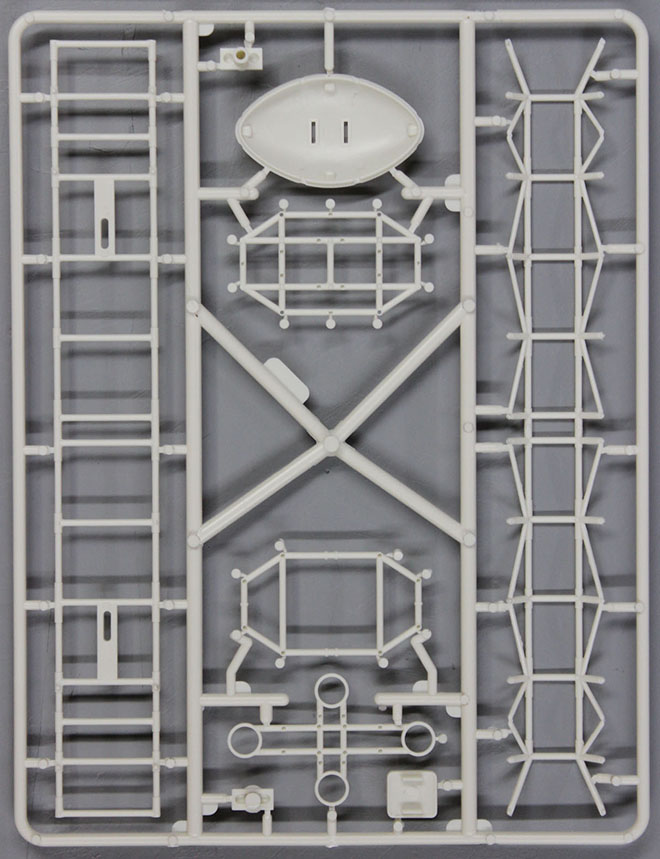
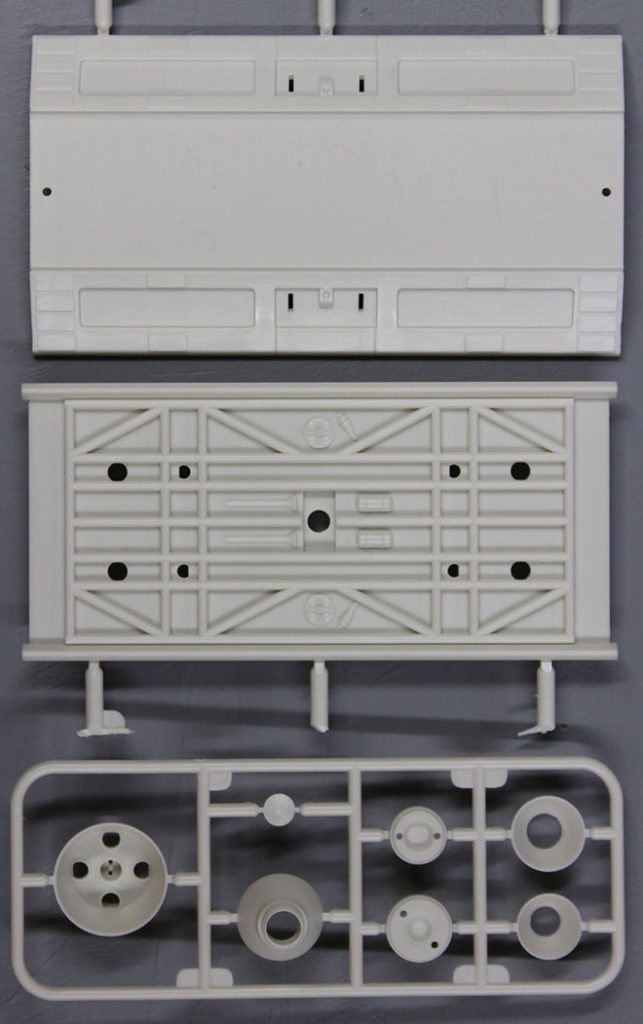
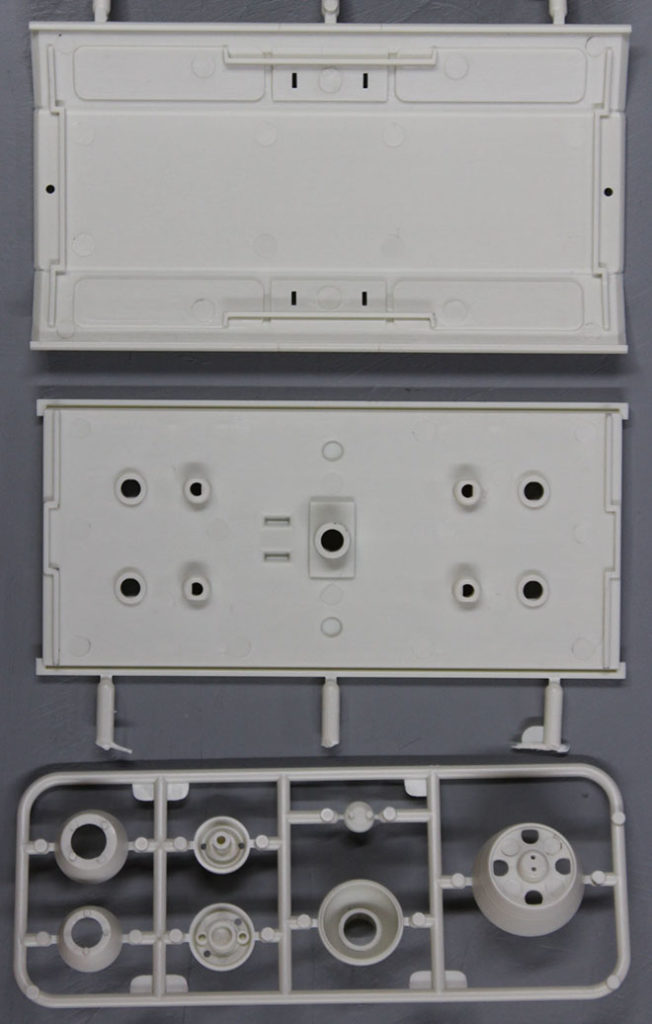
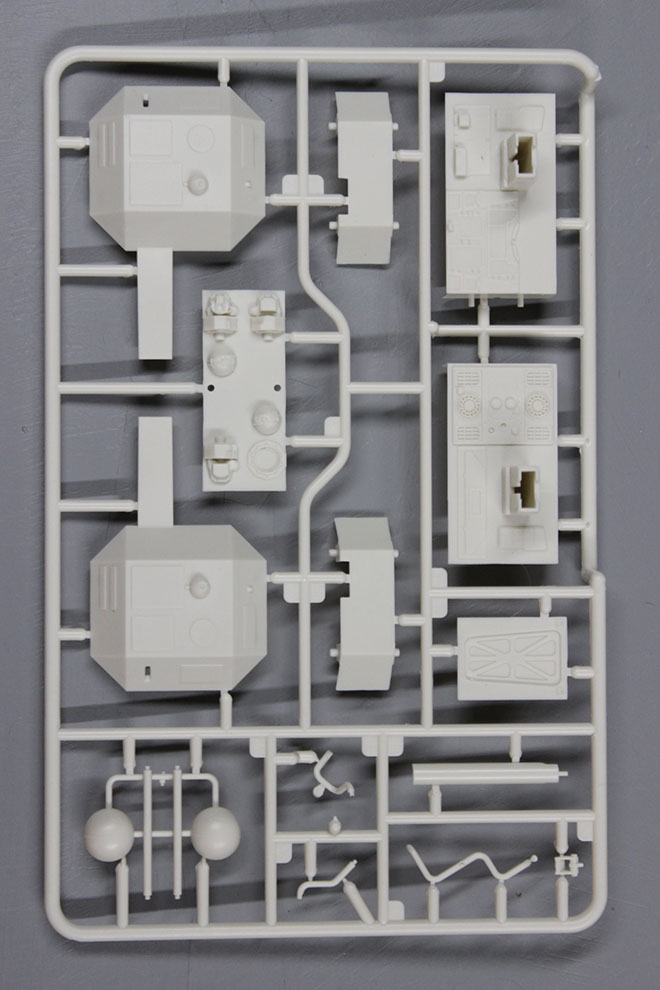
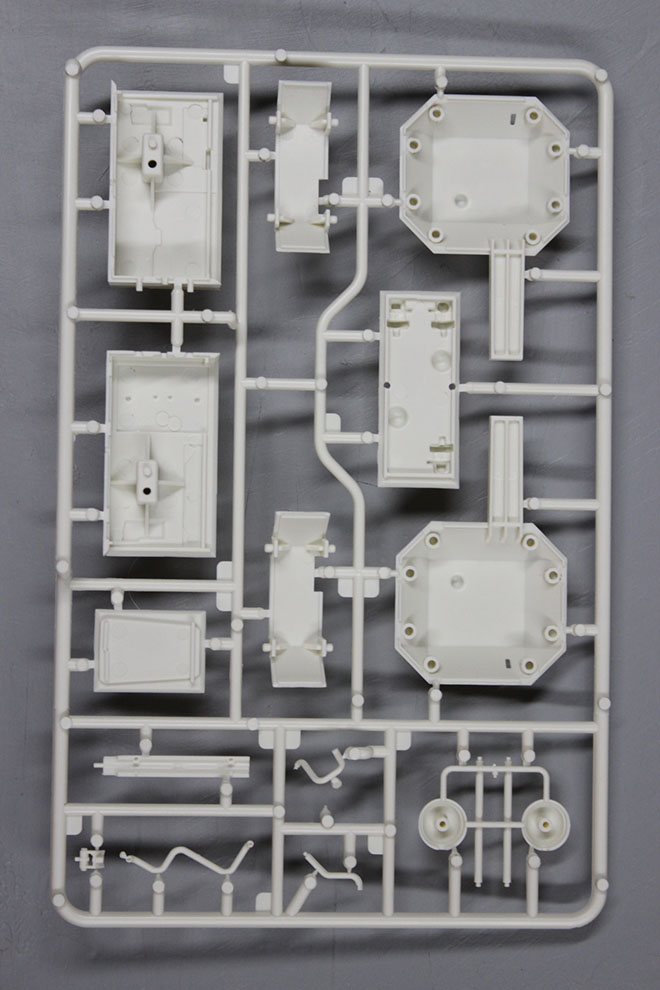
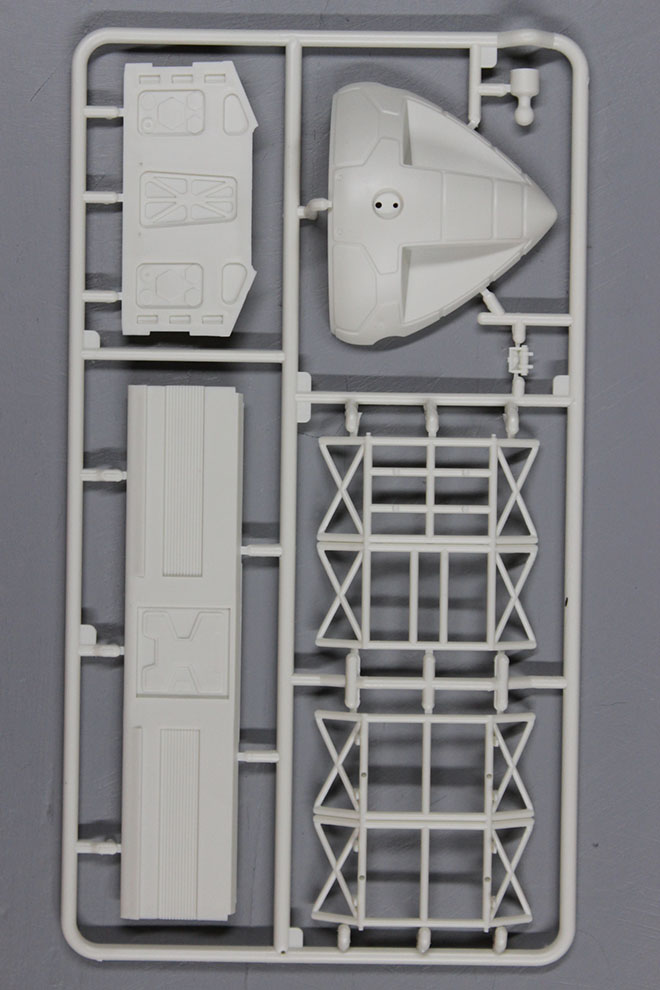
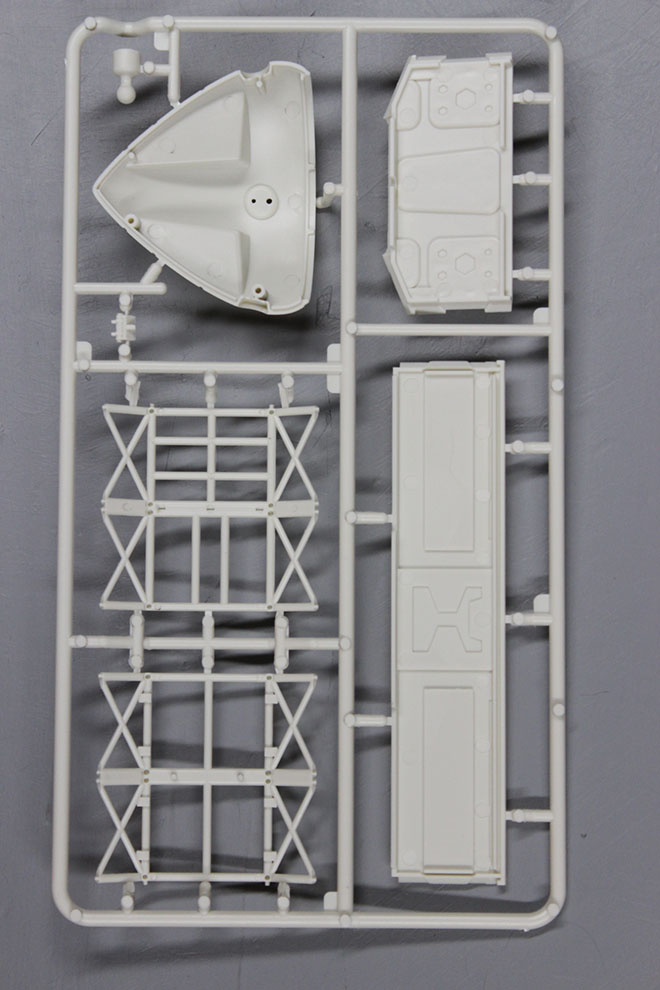
Heck of a far cry from that old 1970’s version, eh? This is the kit we’d always wished had been done at the time!
Round 2 Models: Wonderfest 2019 preview
We are excited as always to participate in the Wonderfest Sc-Fi modeling show each year in Louisville, KY. This year is no different and the show is just a few weeks away. You can check out specifics on the show here.
Don’t forget that each year we award participants in the model contest for the BEST USE OF A ROUND 2 MODEL KIT! There is plenty of room for interpretation in that definition. We like CREATIVE use of any of our kits, but if not that, then over-the-top craftsmanship usually catches our eye. Use our kits in an exciting way in a super-clean kit-bash, and you’ve got yourself a winner! We present awards for adults as well as models from the child or youth category to encourage young talented modelers
We are preparing our booth display where we’ll show buildups of our most recent and upcoming releases as well as sneak peeks at some new stuff. We usually try to keep the wraps on things until the show, but a few of our upcoming new kits were recently placed on our distributor price list. So rather than let everyone try and figure out what is going on, we’re going to fill you in NOW!
We will be showing three new sci-fi/pop culture kits at the show this year starting out with the 1967 Impala from the popular series, Supernatural. We’ve gotten a ton of requests for it and its as iconic a car as you will find on the airwaves today. We will have a mockup on display at the show.
We have been reviewing test shots that will be used in this year’s Space:1999 prebuilt product… drumroll, please… a 22″ Eagle II. The model will feature a slightly different engine bottle arrangement and all-new shoulder pods. The springs will be a bit “softer” to compress more fully as we see in the show. Just showing some pics of the assembled test shots isn’t that appealing, but we intend to have a fully factory-decorated piece at the show to show off exactly what the final product will look like.
Lastly, (but not leastly) we will be showing a fresh test shot of our brand new tooling of the 1/72 scale Eagle. At 1/72, the ship measures little over 14″ long and will eventually replace the old 1/96 scale MPC model everyone is used to. It will be the first model of the Eagle to ever come with a base to hold it in flying position. We’ll drop a ton of pics here with some comparisons to our other models. We hope to see you at the show!
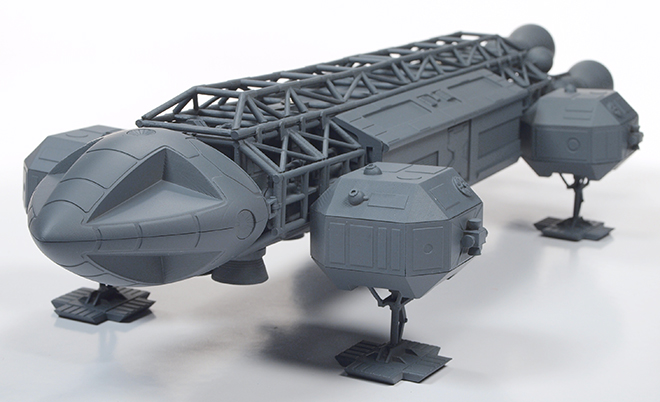
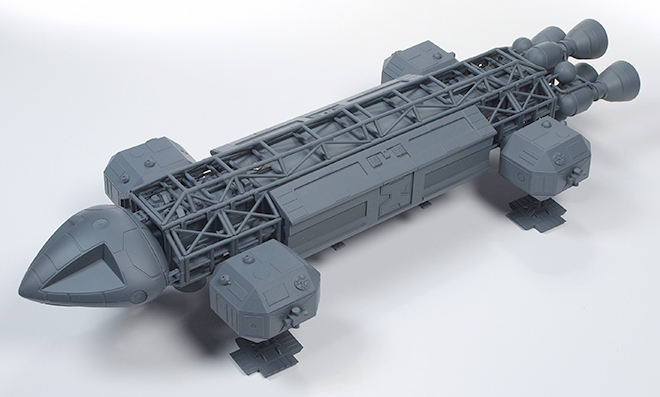
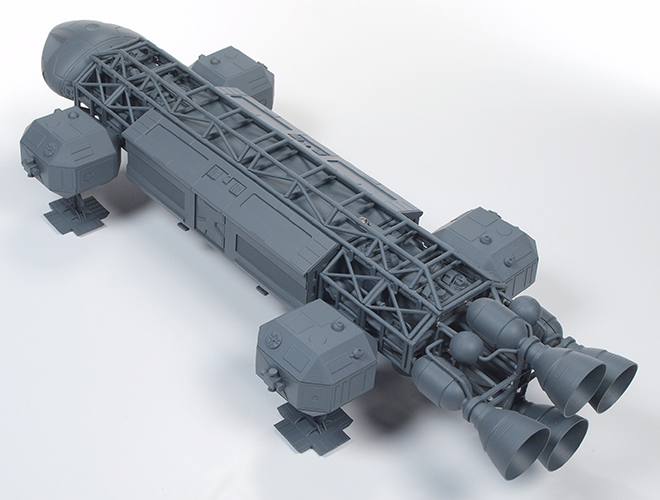
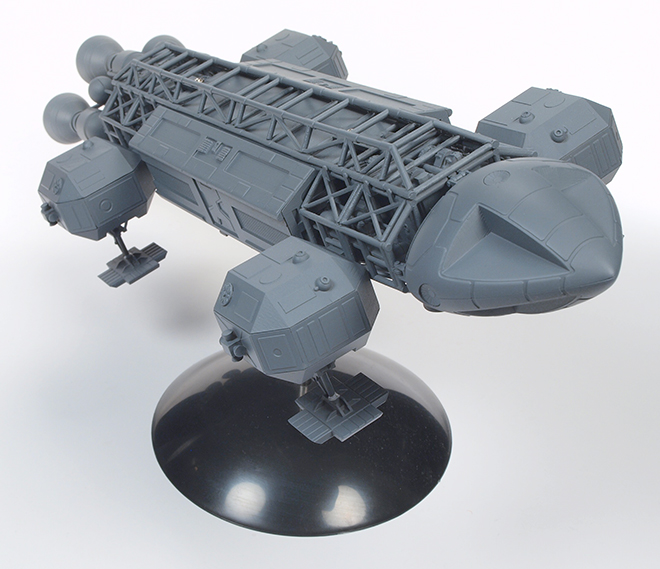
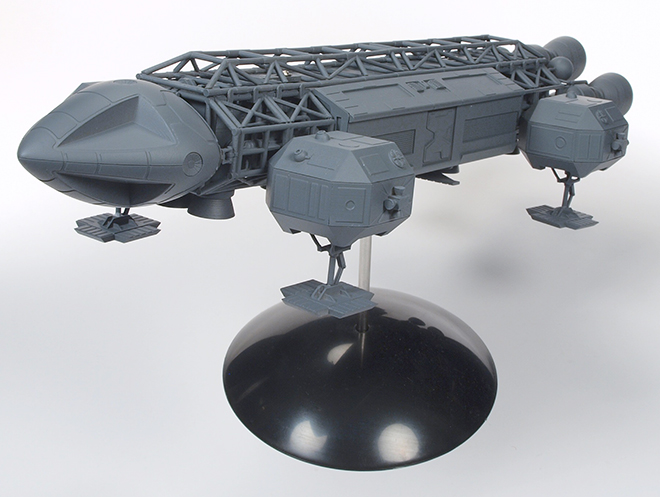
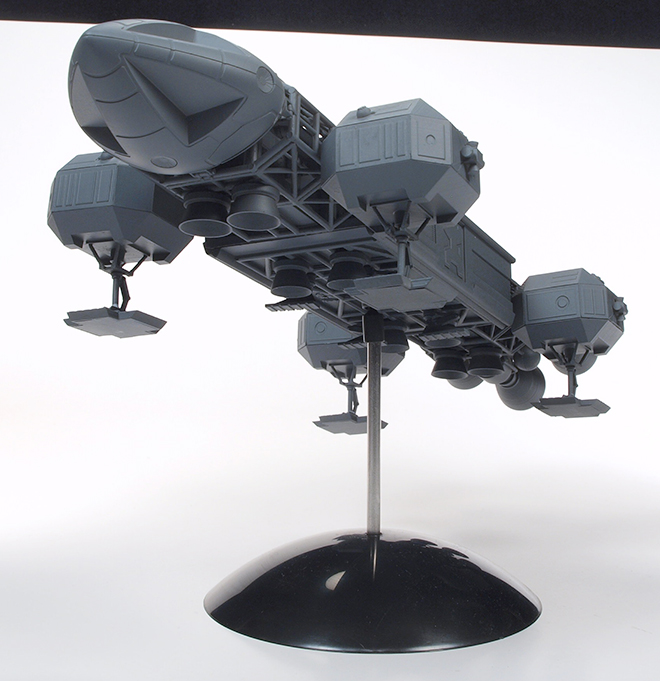
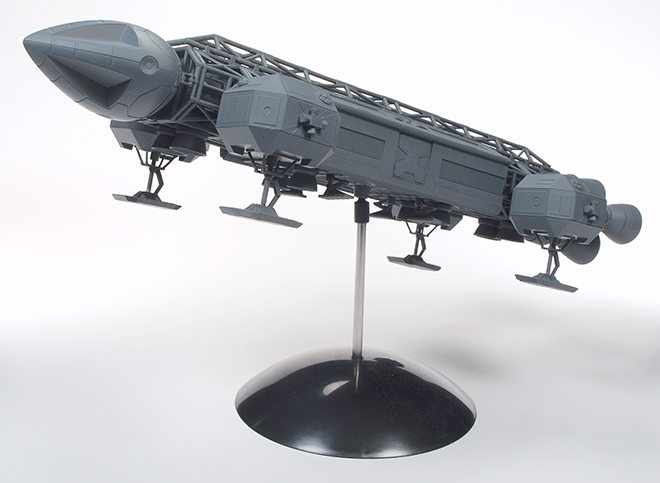
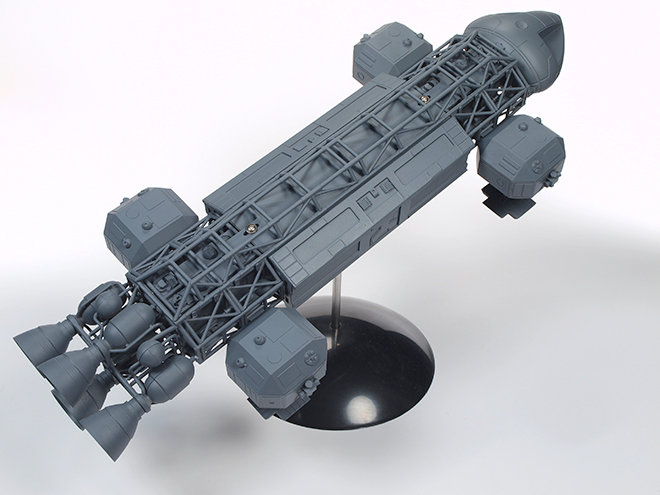
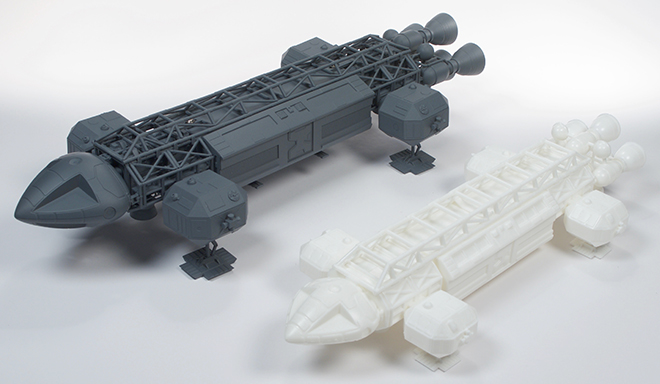
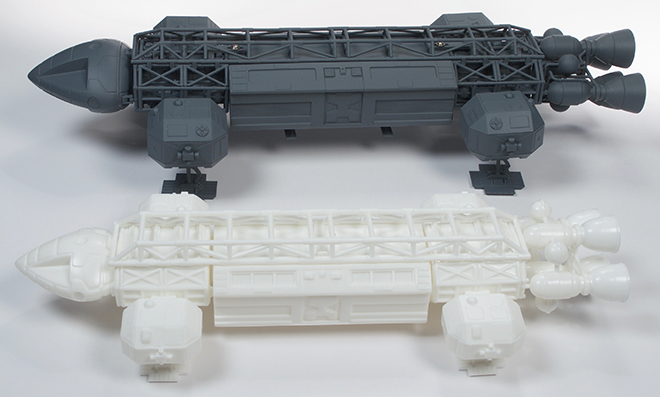
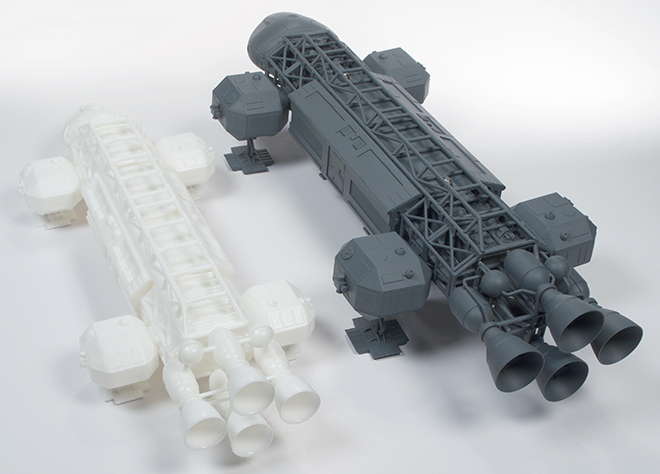
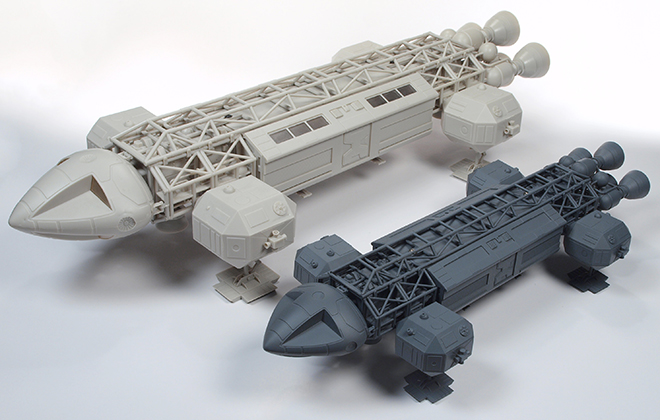
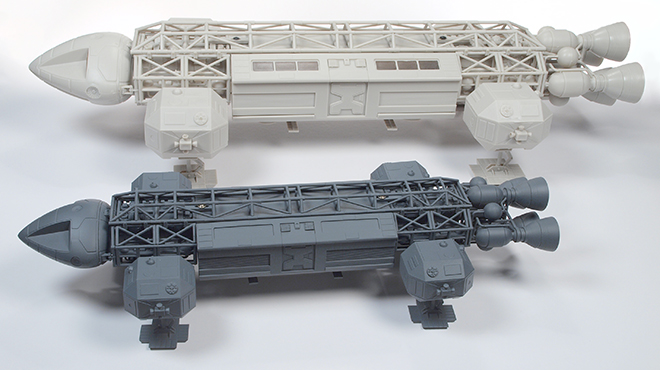
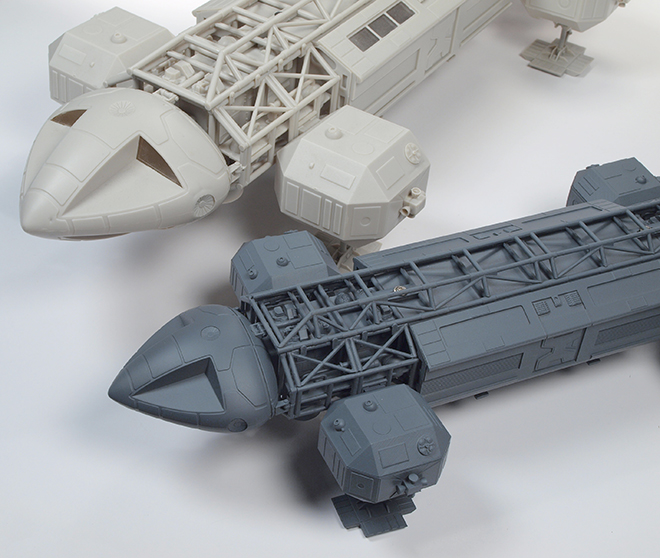
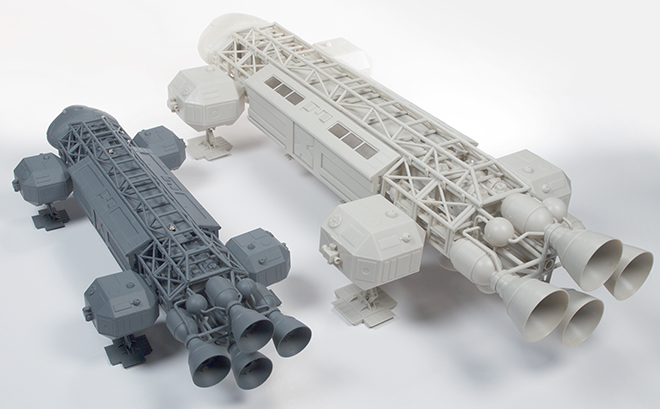
Polar Lights Model Kits: Another stupid idea from Polar Lights!?!
[UPDATE 4/8/2019] We assure this is a real release! We purposefully announced in on April Fool’s Day to keep you guessing. Surprisingly, Round 2 has always gotten positive reactions to April Fool’s Day news. We expected no less with this one, but unlike announcements from our diecast cube-neighbors, those of us on the model kit side will deliver (this time at least). Look for the kit in late May or early June. It is available noe to pre-order form your favorite retailers.
Are you ready for UNSPEAKABLE HORRORS FROM OUTER SPACE who PARALYZE THE LIVING AND RESURRECT THE DEAD!?! It will be LIKE NOTHING FROM THIS WORLD!
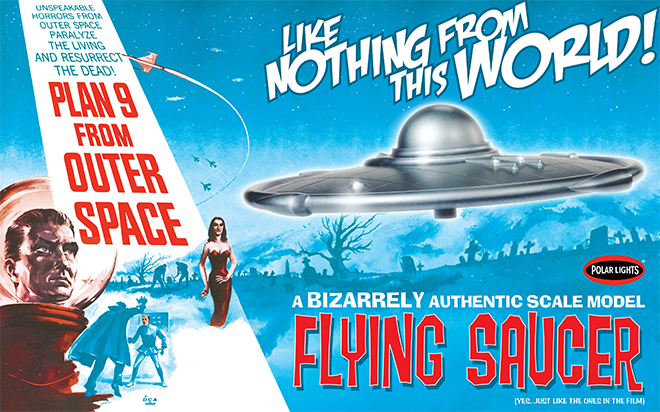
Polar Lights’ next great release may be unexpected (or maybe EXACTLY what you expected.) Hold on to your hats and get ready for a STUDIO SCALE model of the flying saucer from PLAN 9 FROM OUTER SPACE! Keeping true to our reputation, we have gone to great lengths to research every last detail of the filming miniatures used in Ed Woods’ infamous film.
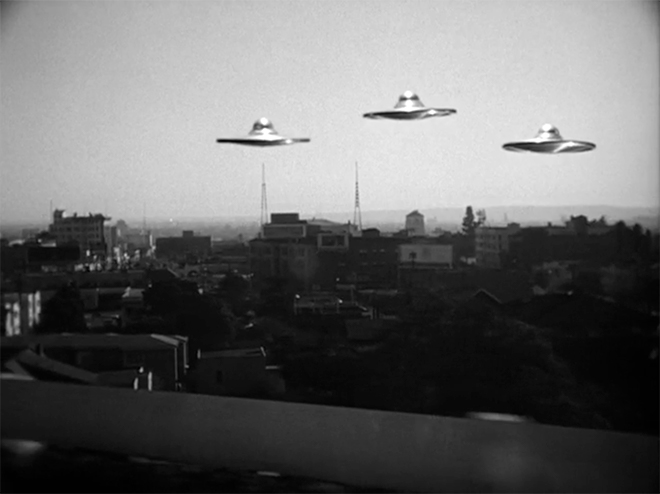
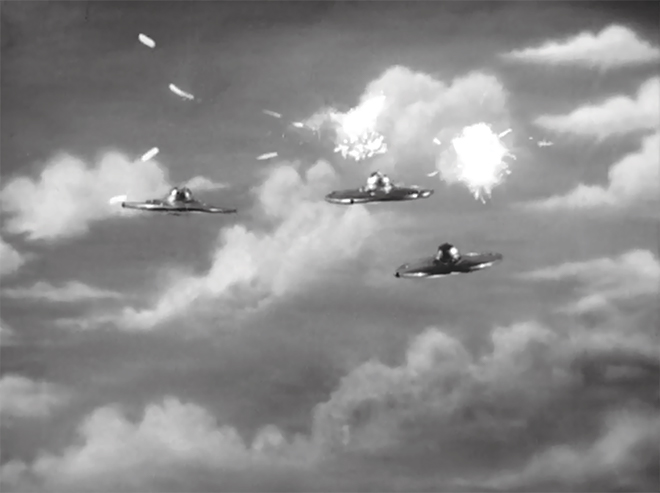
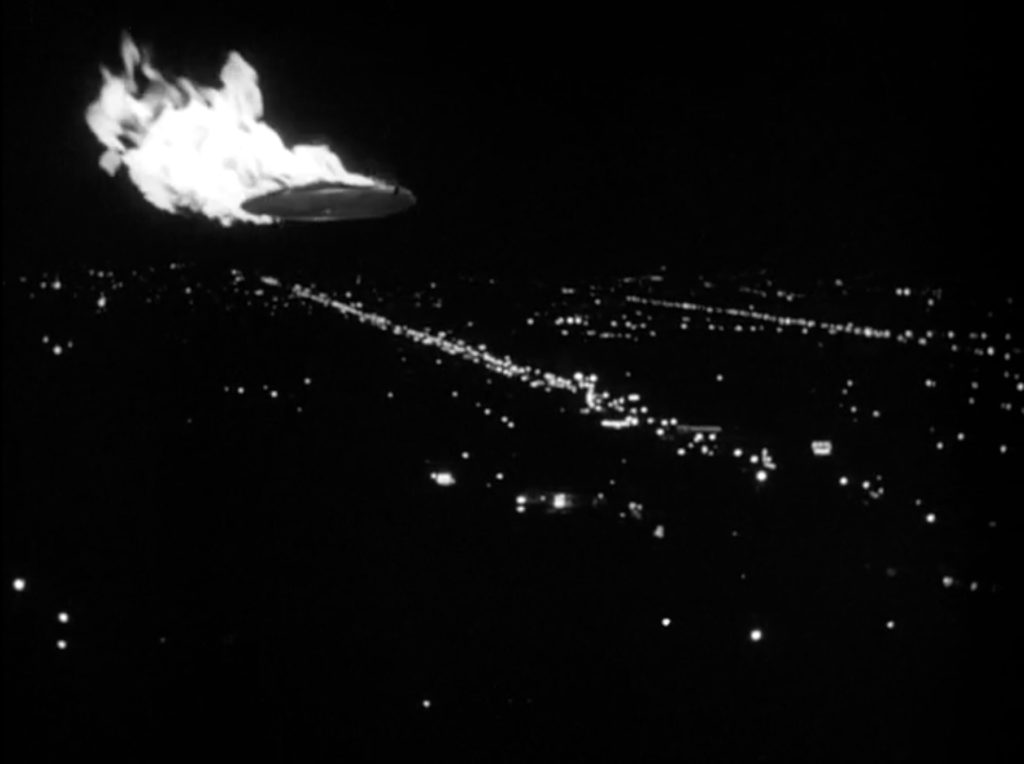
It features plenty of super-cool… features… like a clear dome which were inadvertently painted over in the movie. It would have shown the true form of the mind-numbingly horrific alien invaders. (They were probably too true to the REAL aliens that crashed in the Nevada desert and covered up by the government.) It also comes with what we are calling a DELUXE DISPLAY-O-MATIC device which allows the model to defy gravity and not crash on the floor. It will also come with a decal sheet featuring the movie poster art and 1/25 scale bumper stickers.


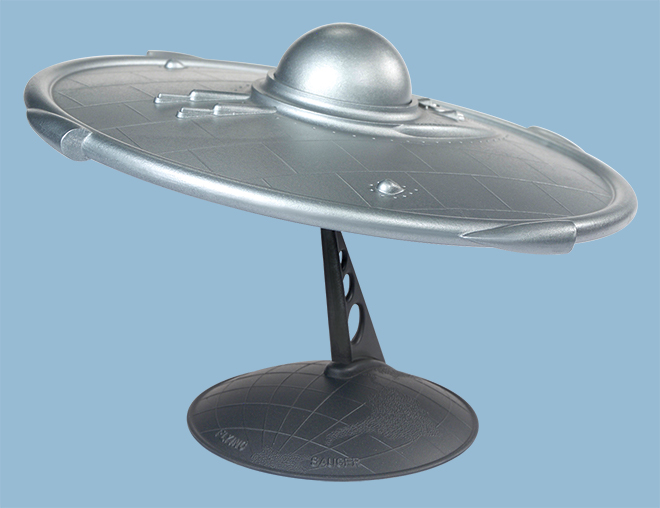
Look for the kit SOON! (probably sooner than you think… unless you think it is coming out NOW! or… NOW! or next week! Or the week after! Or the week after that! Maybe the week after that! Maybe…)
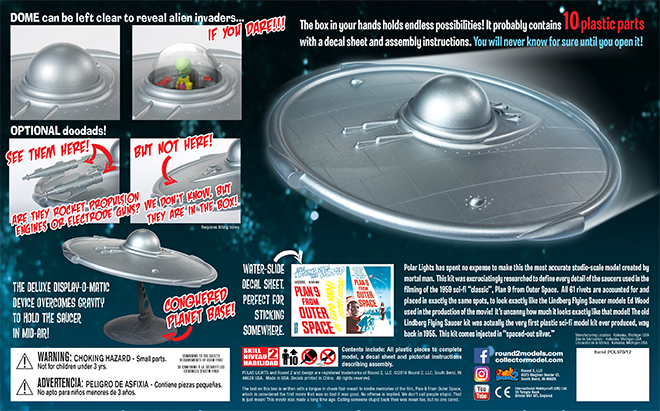
Coming off the Shelf – A Double Header Spring!
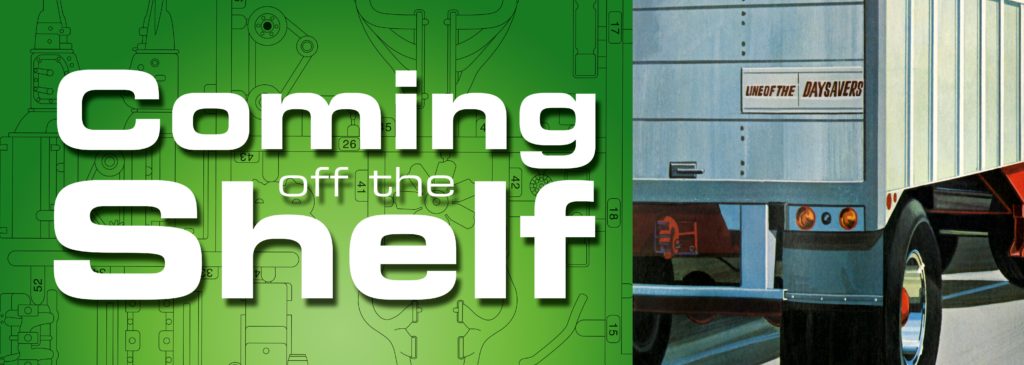
As the grass and daylight grows longer, it’s the perfect time to roll up your sleeves and get those model kit projects going. And what better way than with a BIG AMT classic—the Double Header!! Shot in white, this tandem vans kit offers an authentic converter dolly and functional, sliding rear doors. Not to mention, it’s over 2 feet long when assembled, and includes vintage style packaging and improved decals, thanks to the kats at AMT.
Spring is here, and so is the Double Header!! Coming soon wherever kits are sold.
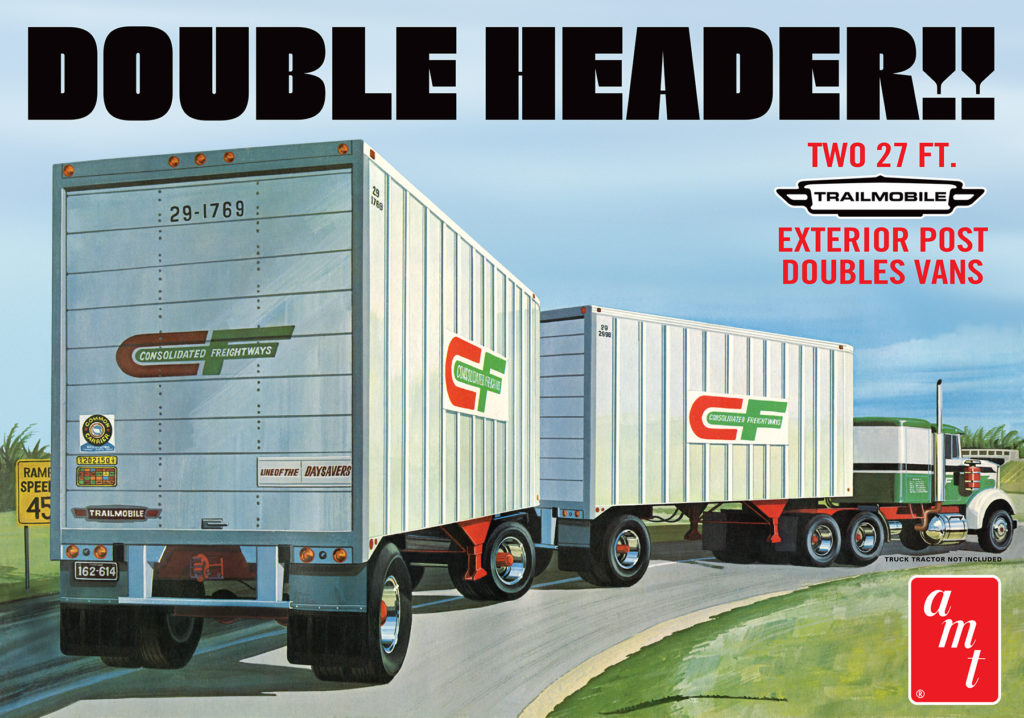

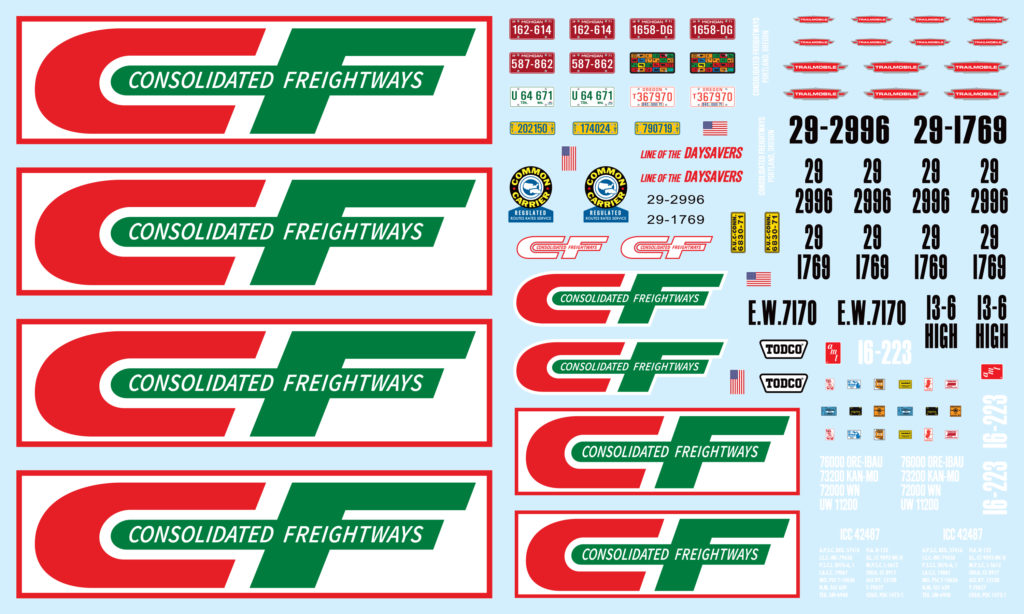
Polar Lights Model Kits: Klingon K’t’inga instruction revisions
UPDATE [4/1/2019]: Links have been repaired.
We have gotten an amazing reaction to our 1:350 Scale Klingon K’t’inga kit, and we want to thank everyone for all of the accolades. As with any new product, a few minor problems were brought to light and we will work on correcting them in future production runs. One of the biggest things seemed to pertain to the instruction sheets for both the kit and lighting set. That is something we can correct and share now with everyone that has already bought the kits.
Feel free to pass along these download links to friends that have the kit. We have already gotten positive feedback on the revisions already. Hopefully, this helps everyone.
Light Set Installation Instructions
K’t’inga Light Kit Instructions
Kit Assembly Instructions
K’t’inga Model Kit Instructions
Here is a low res look at the revised kit instructions.
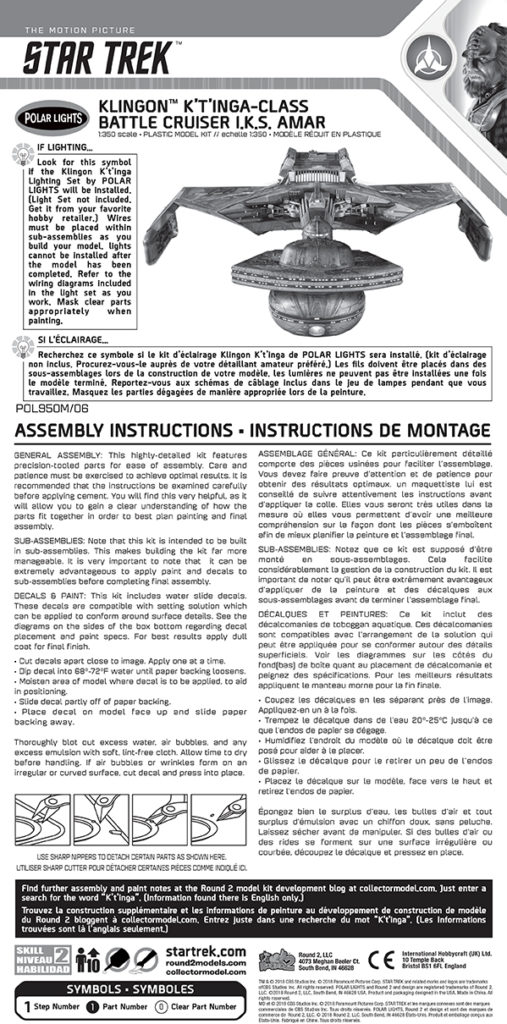
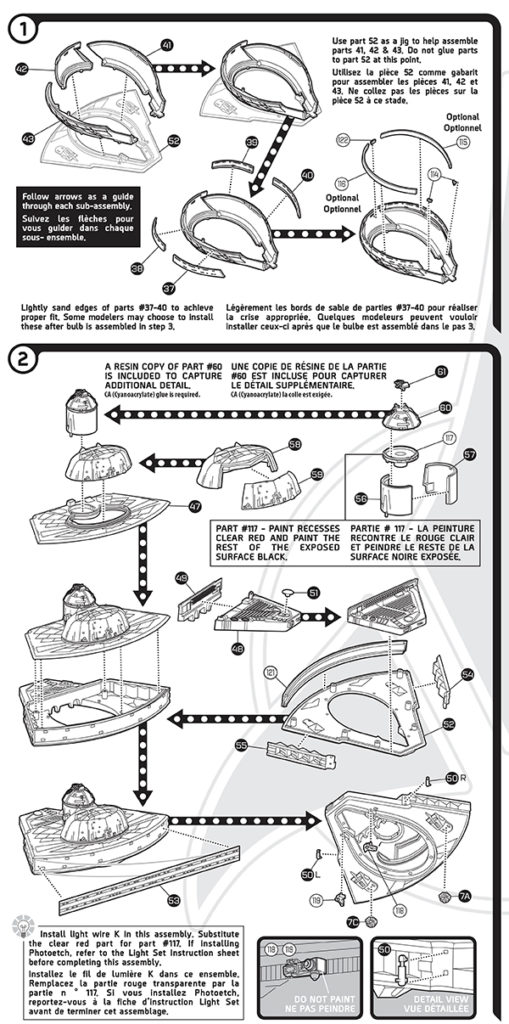
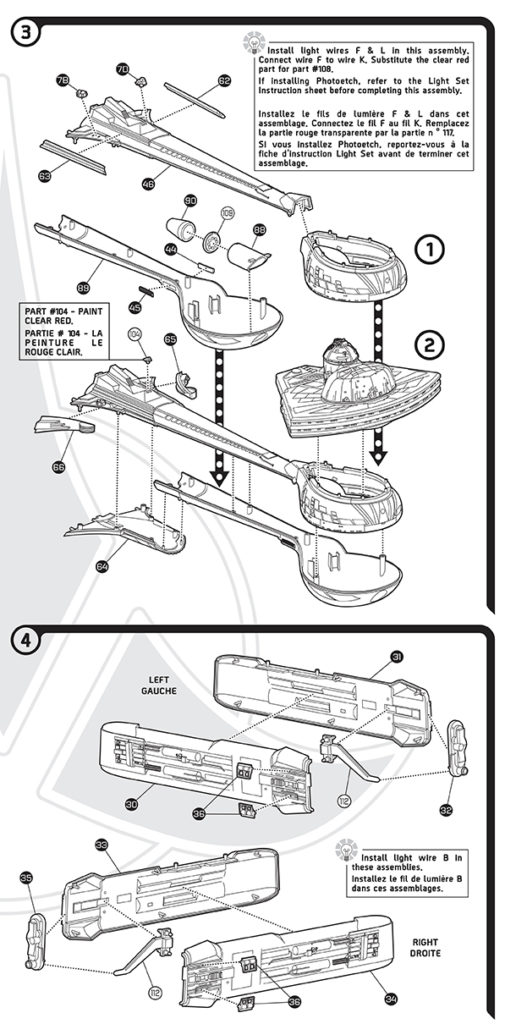
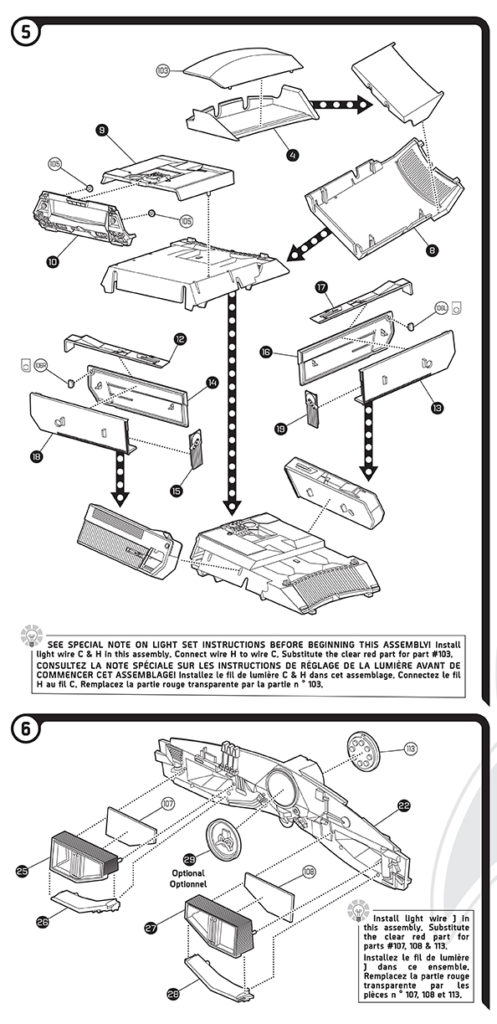
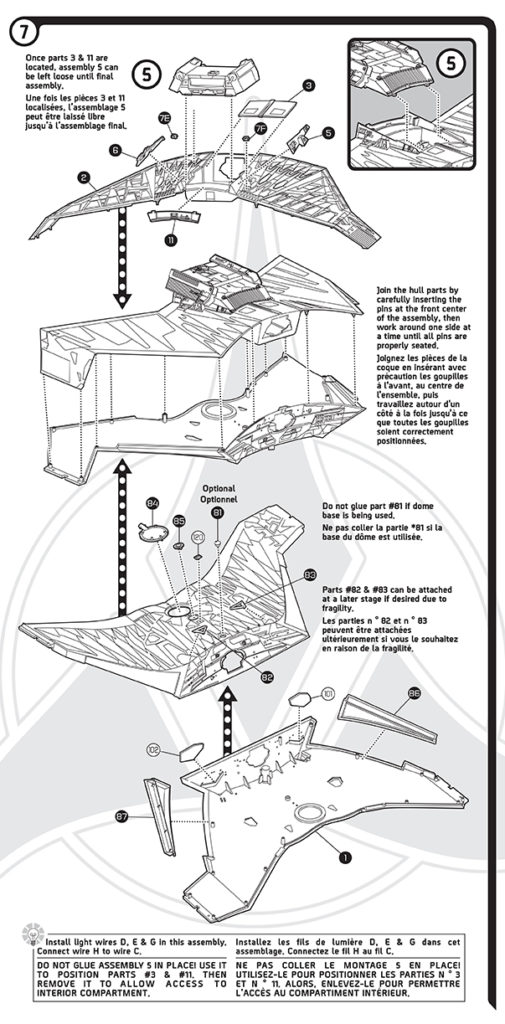
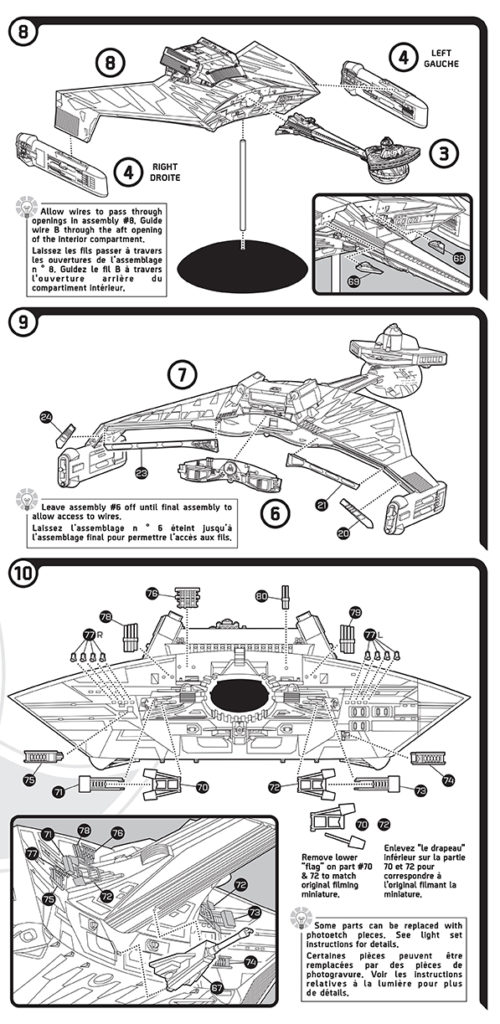
AMT Model Kits: Garage Accessory Series Set #3
Continuing a series of articles that take a look at some upcoming sets of 1/25 scale garage accessories…
We don’t want to make the same mistake for our third release as we did with the first two. Release #3 is scheduled for a Q2 2019 release, but the mockup has already been completed and we should have test shots soon. Here is a sneak peek at our mockup for this uplifting release. (see what I did there?)
As you can see it will be a 9′ service lift. It includes a figure with an impact wrench. The arms of the lift are articulated and they can be set at any height.

